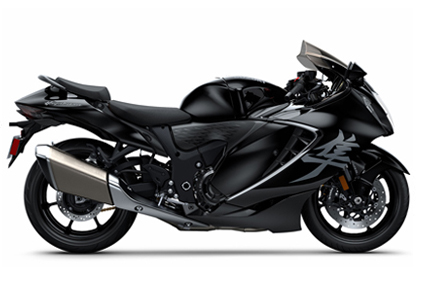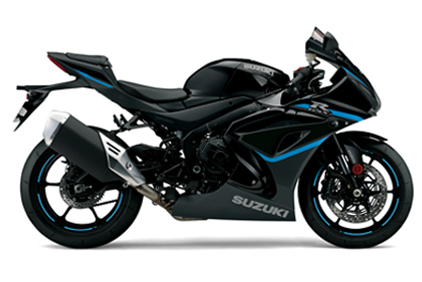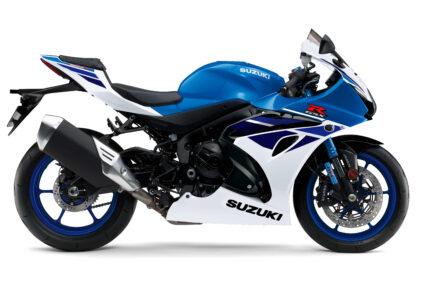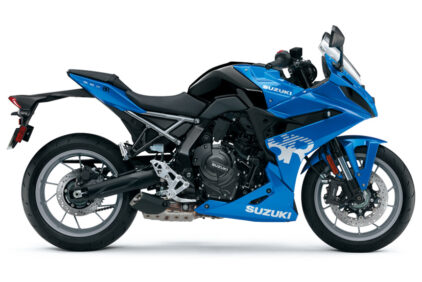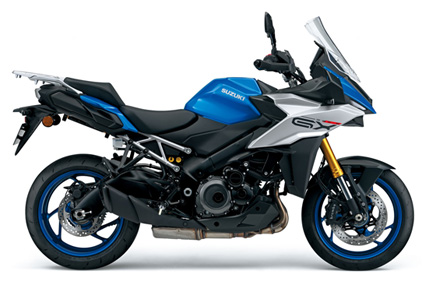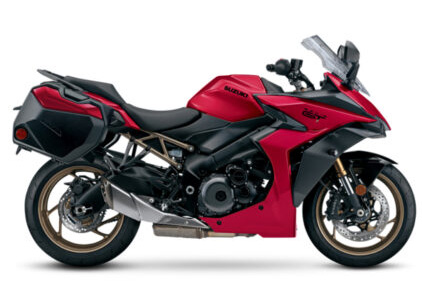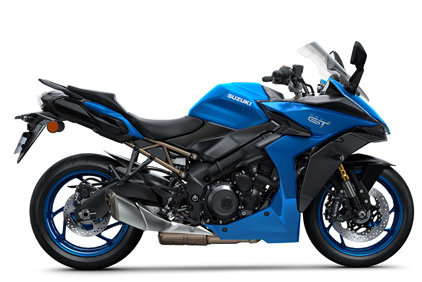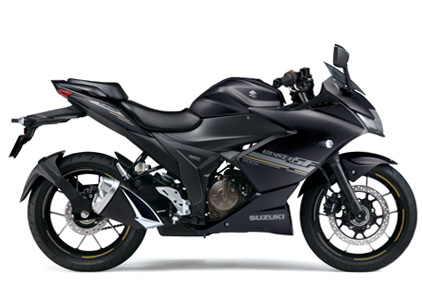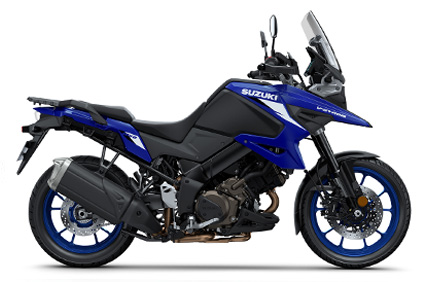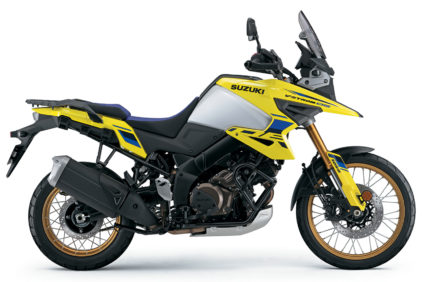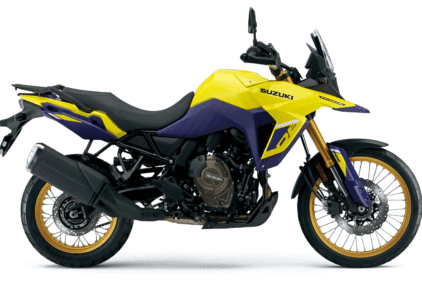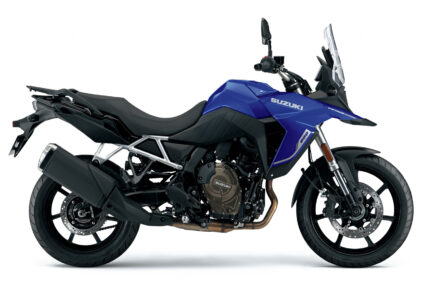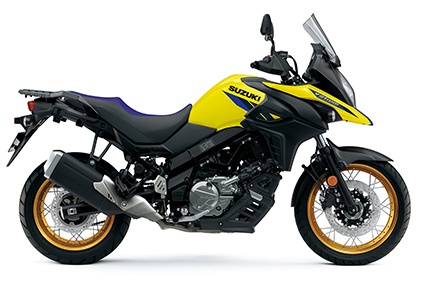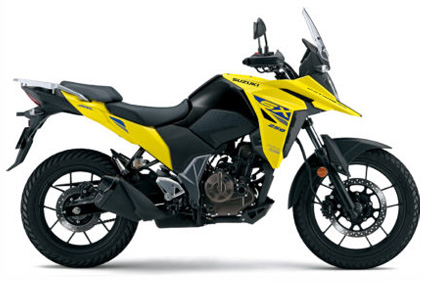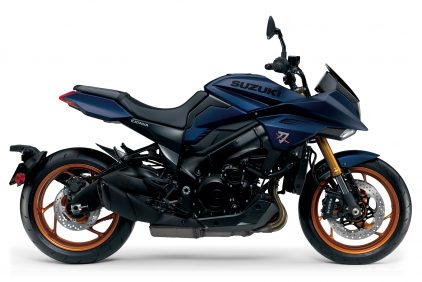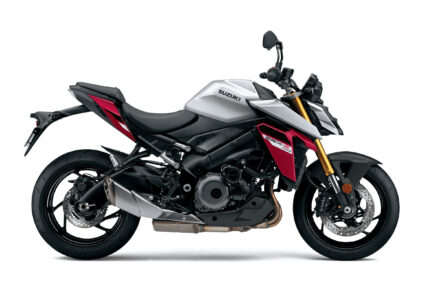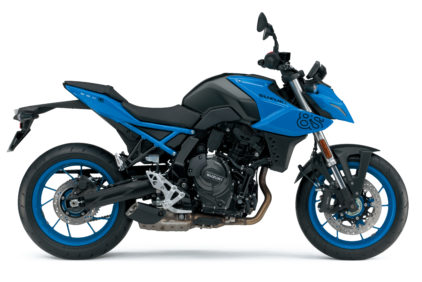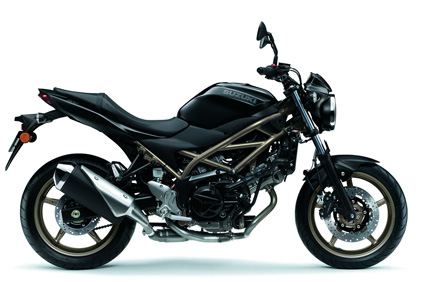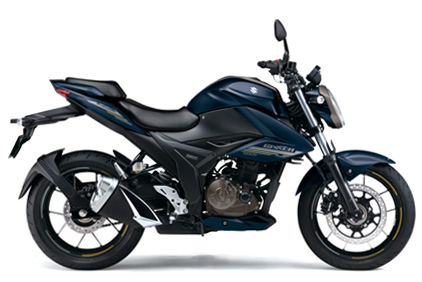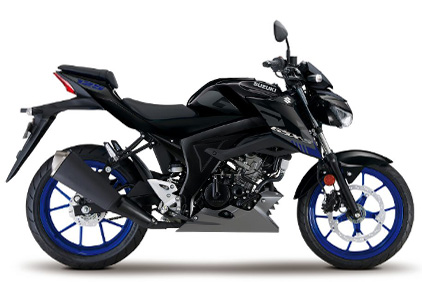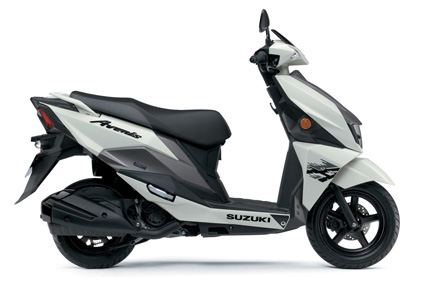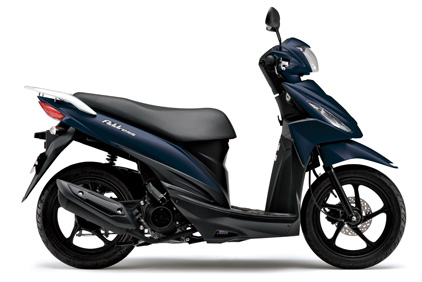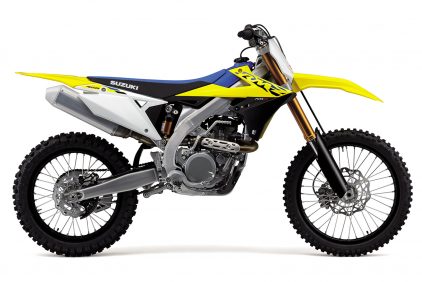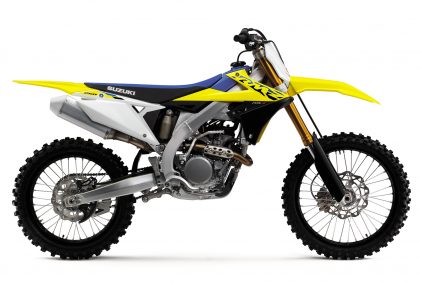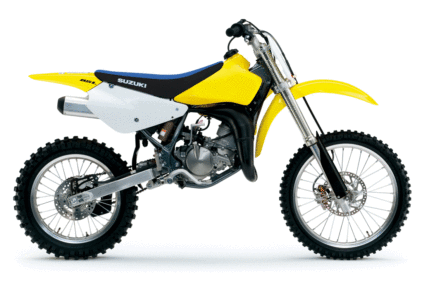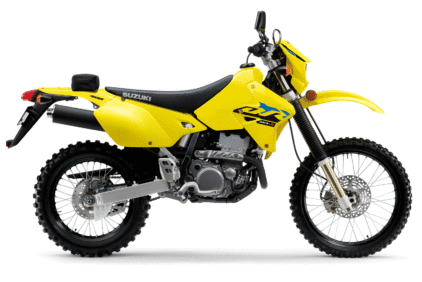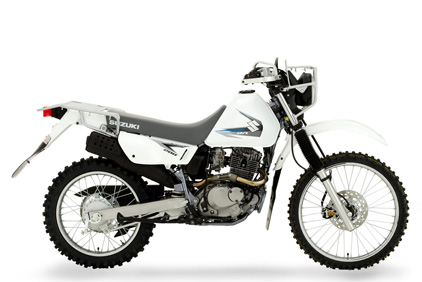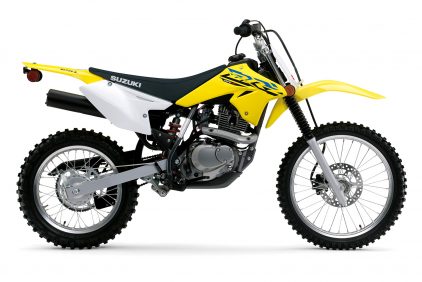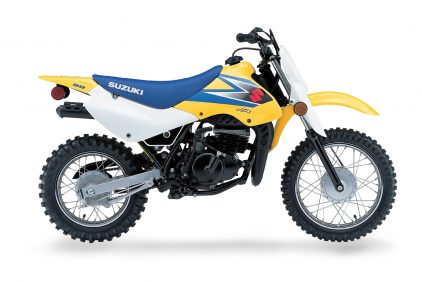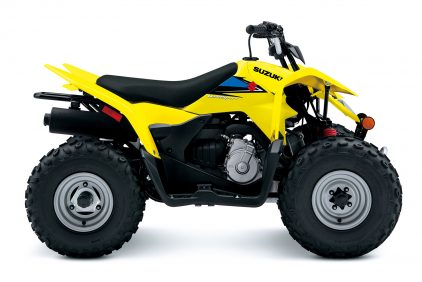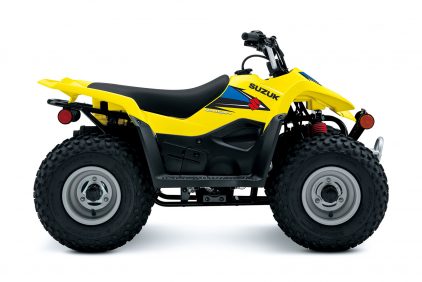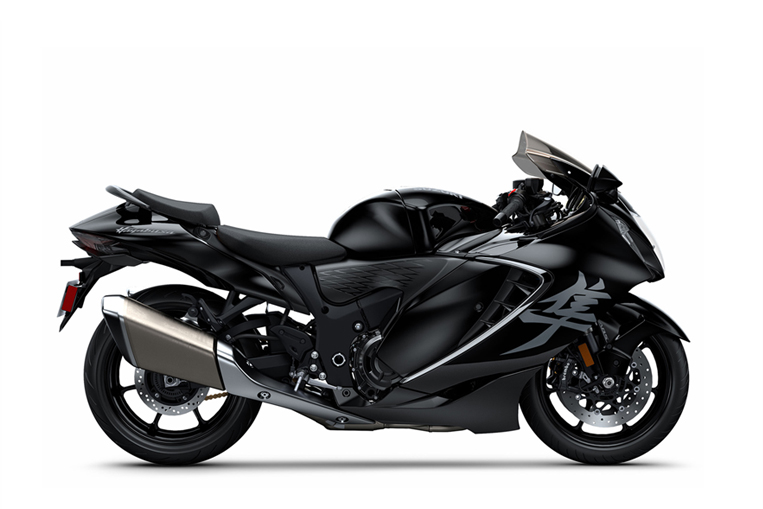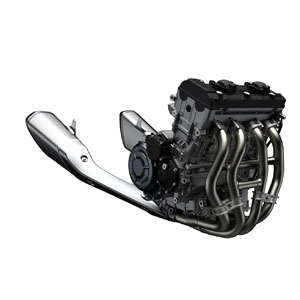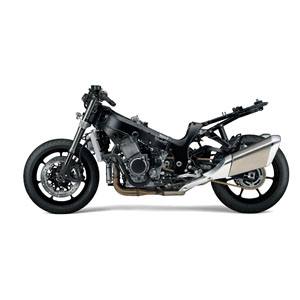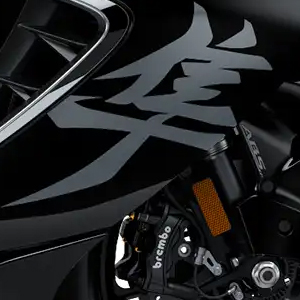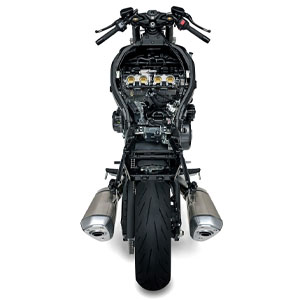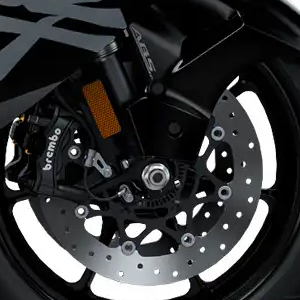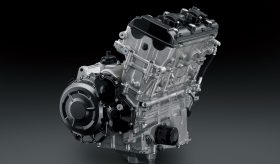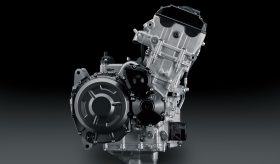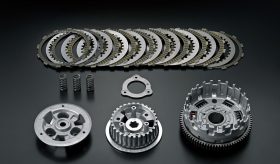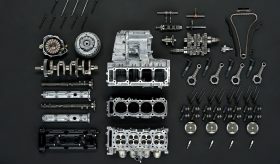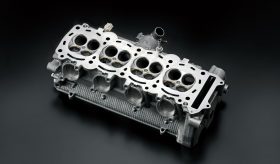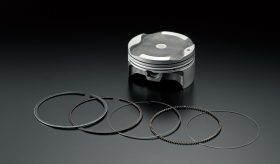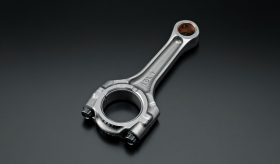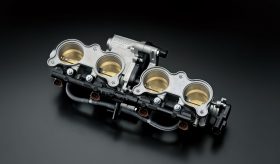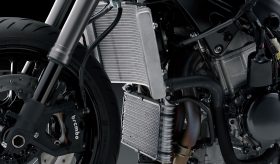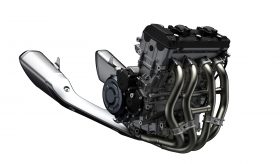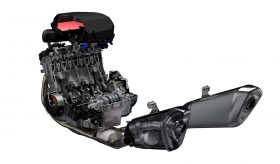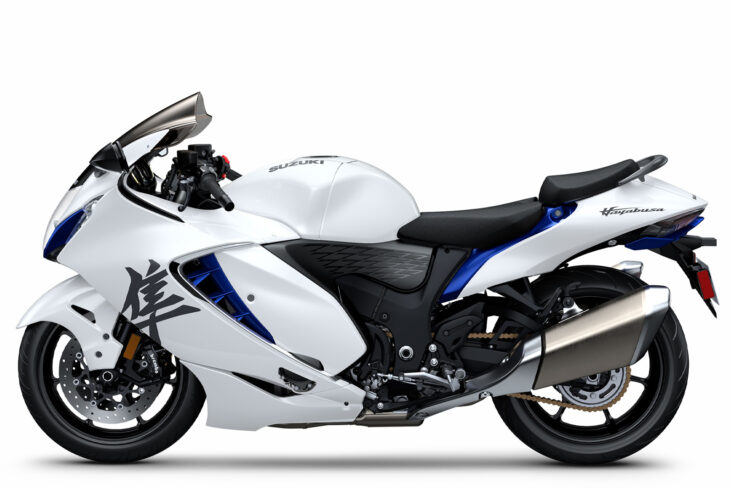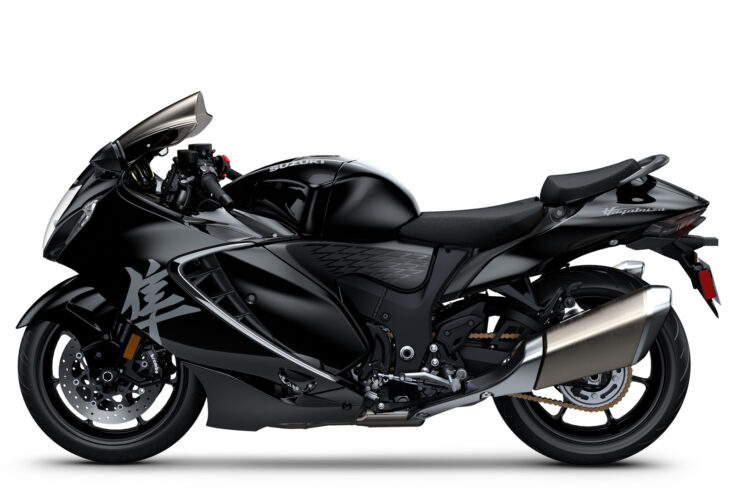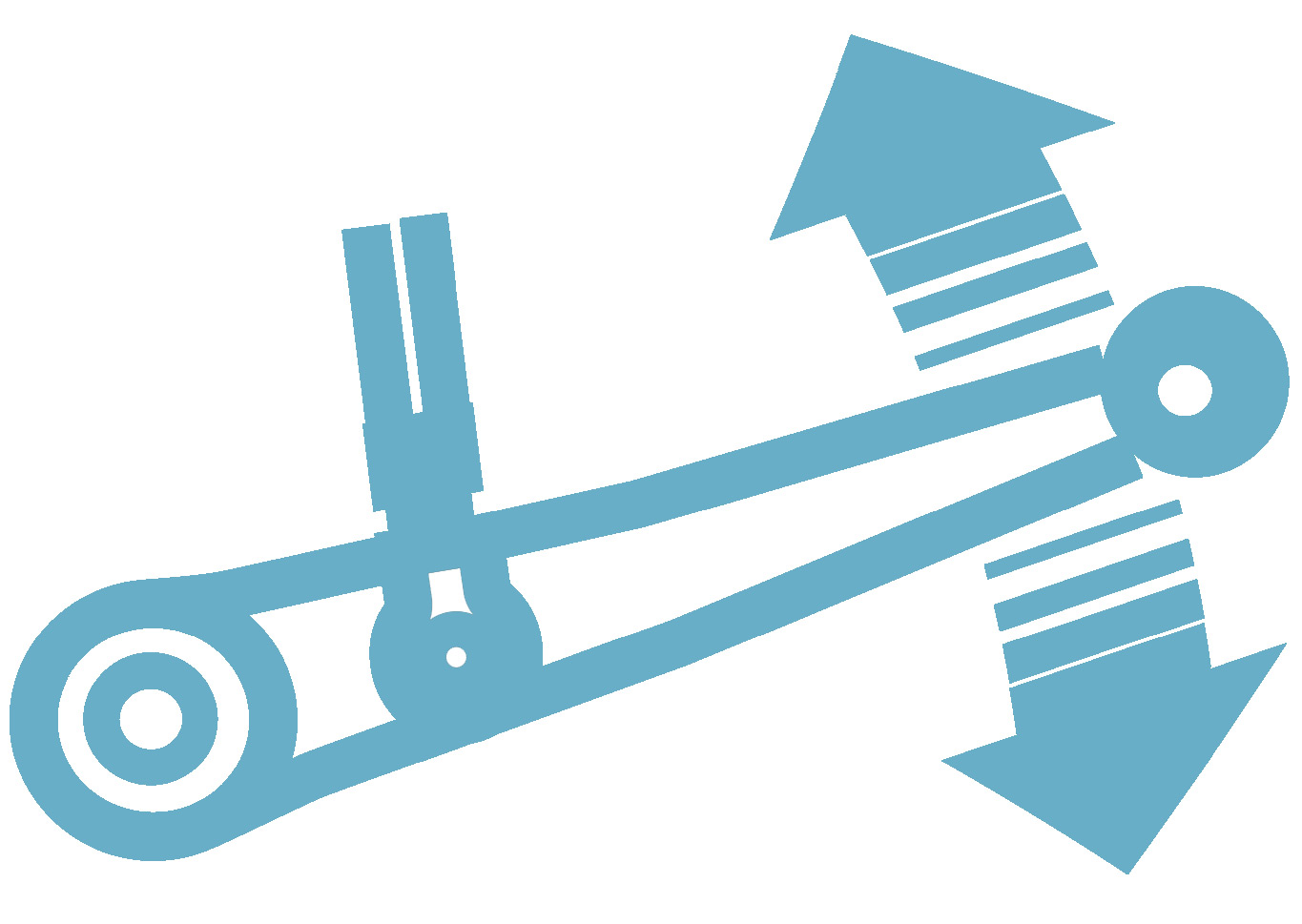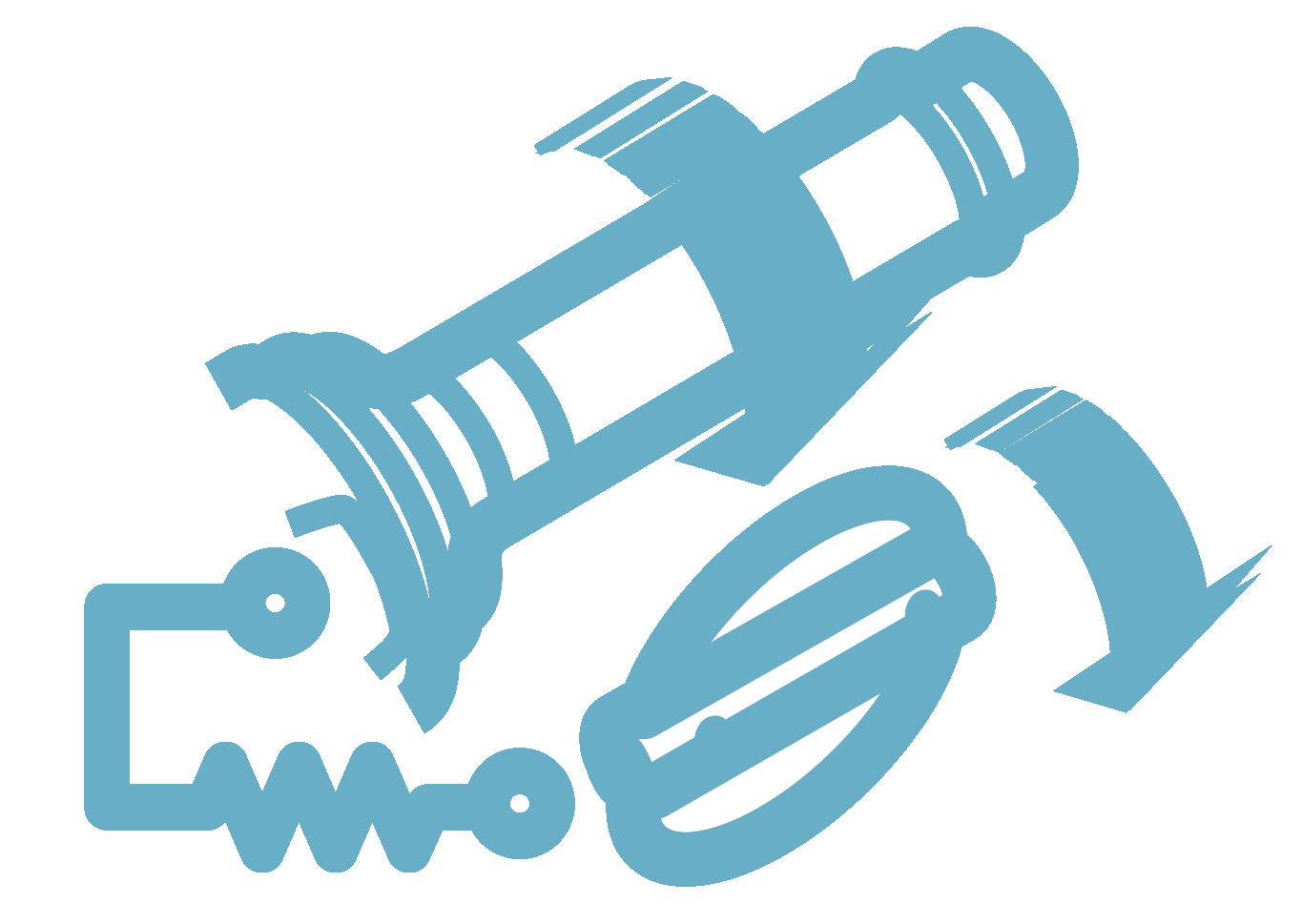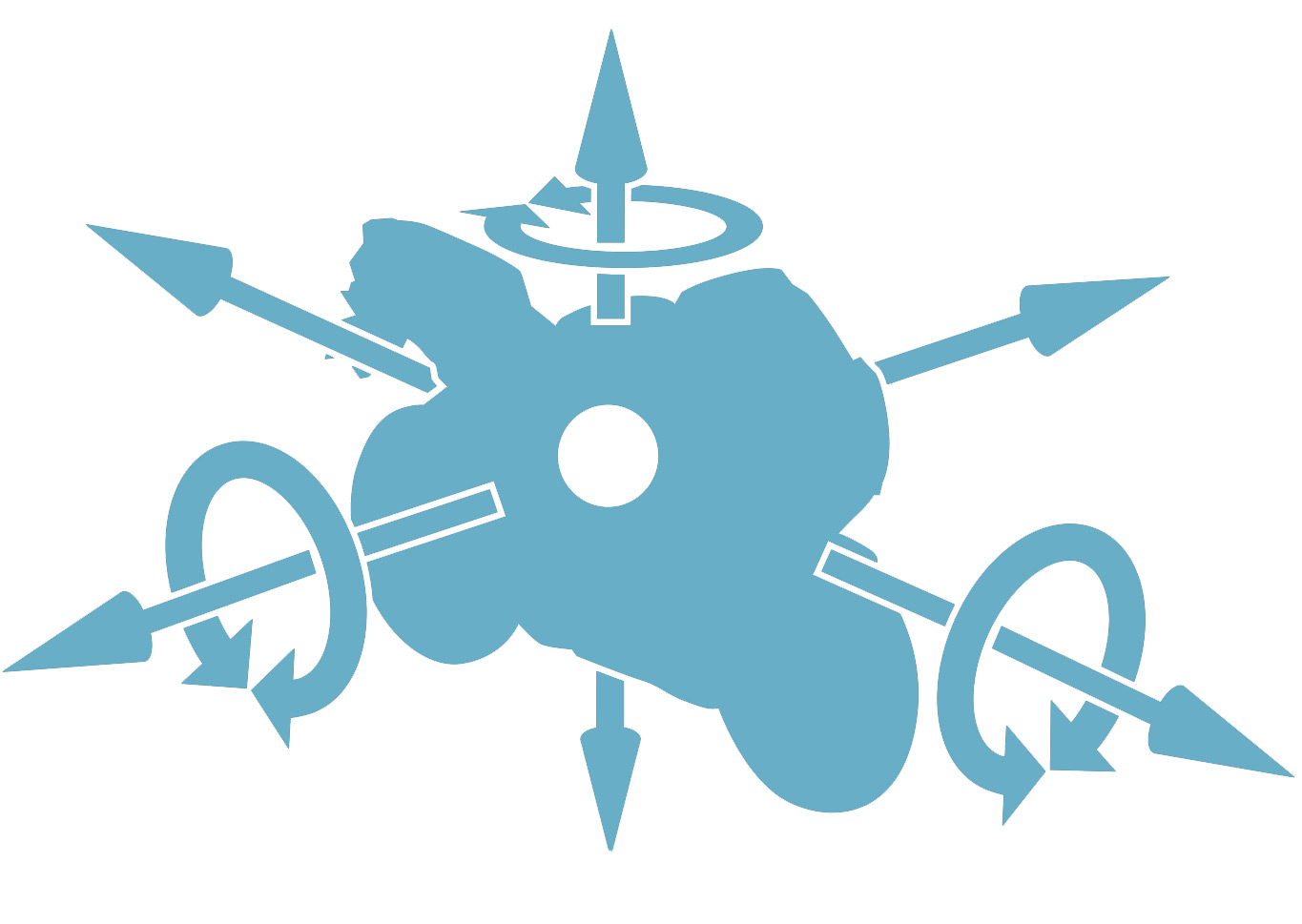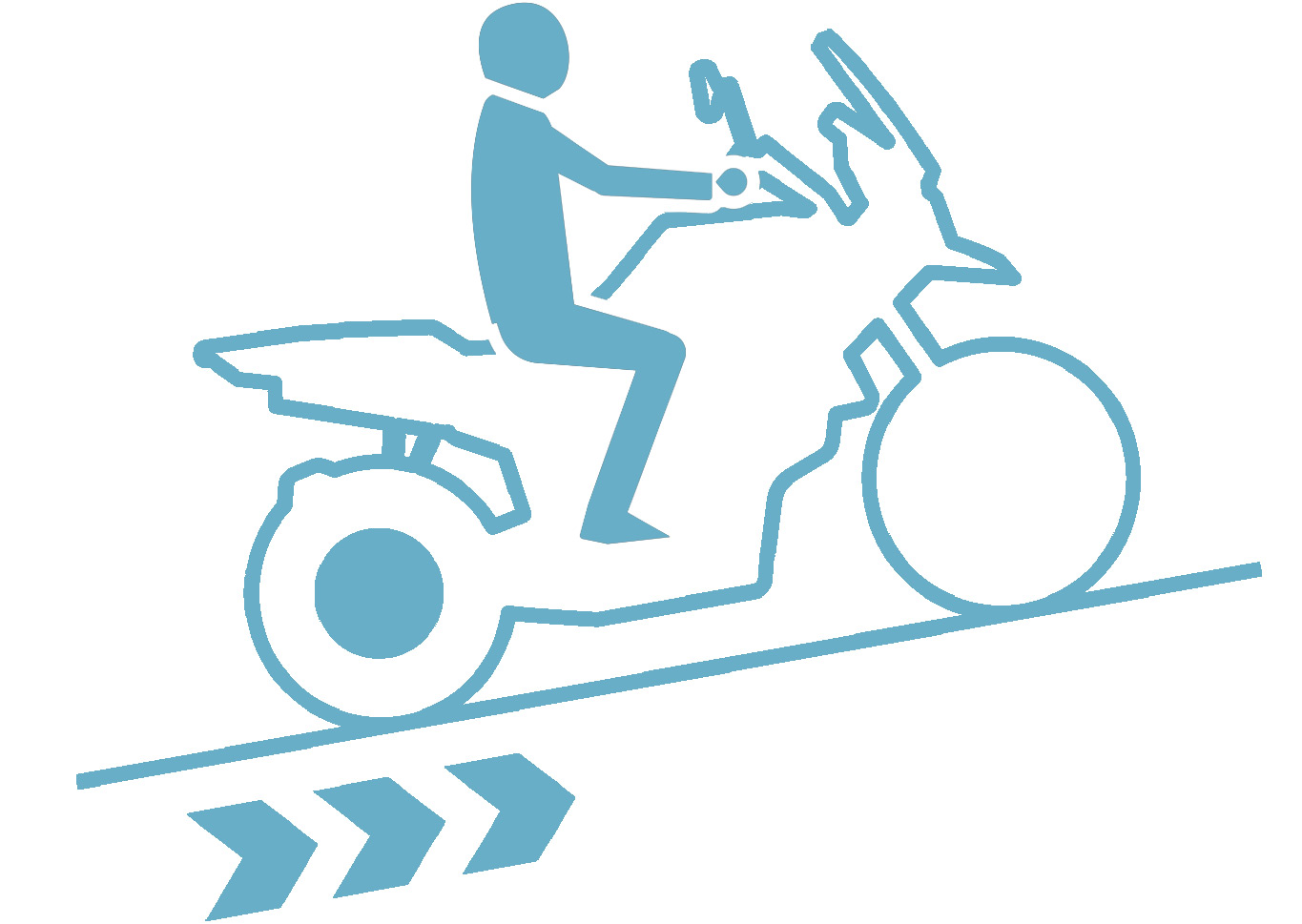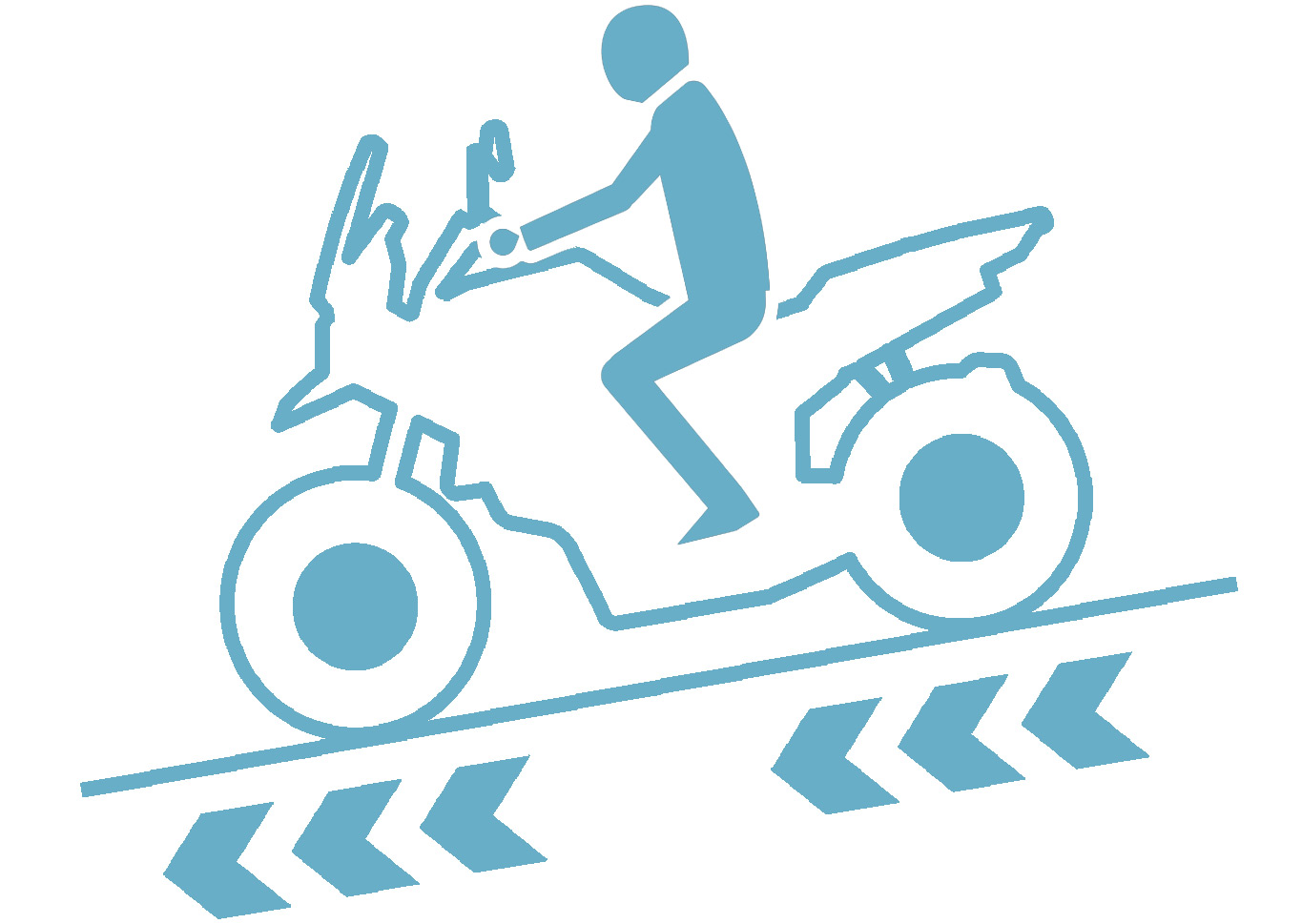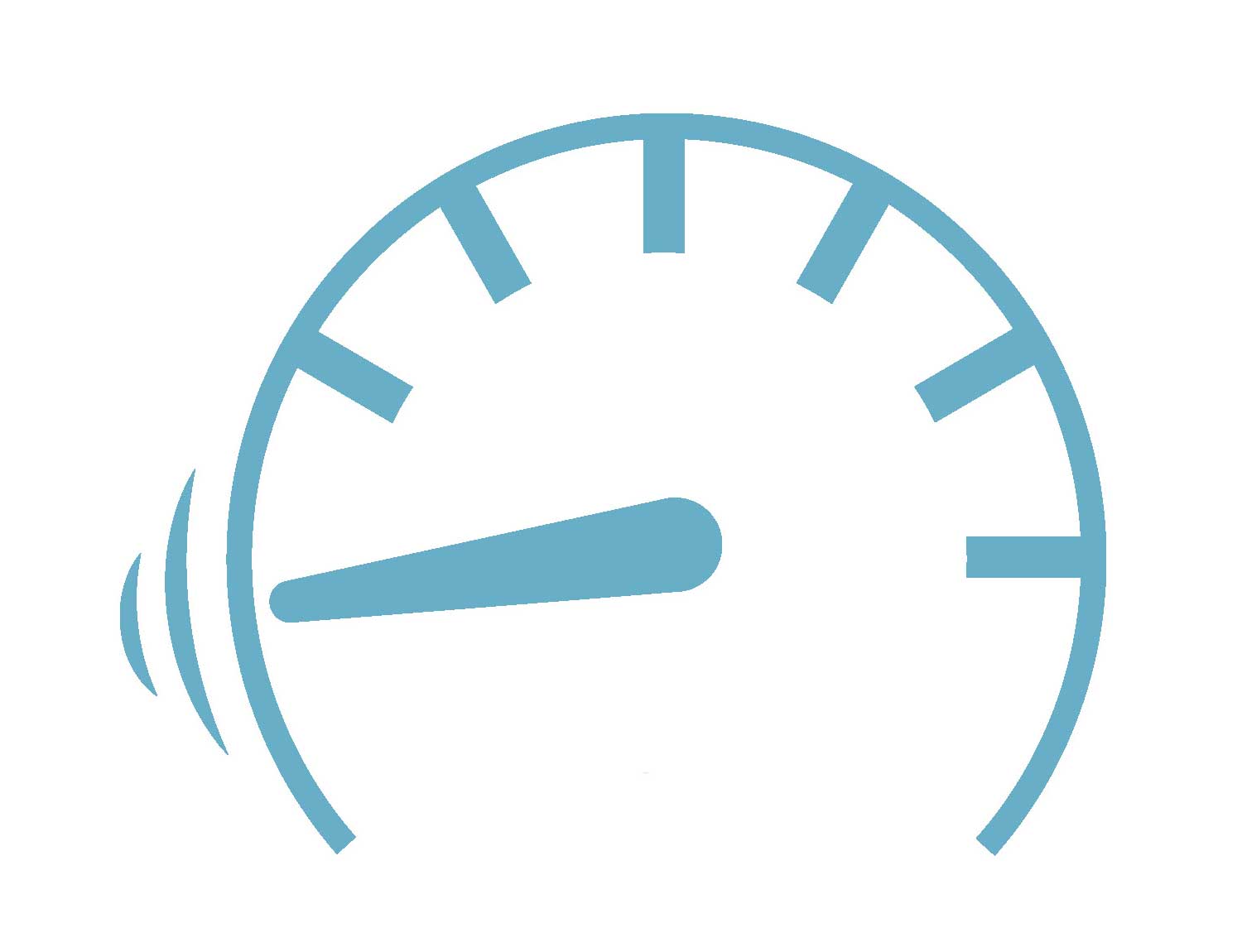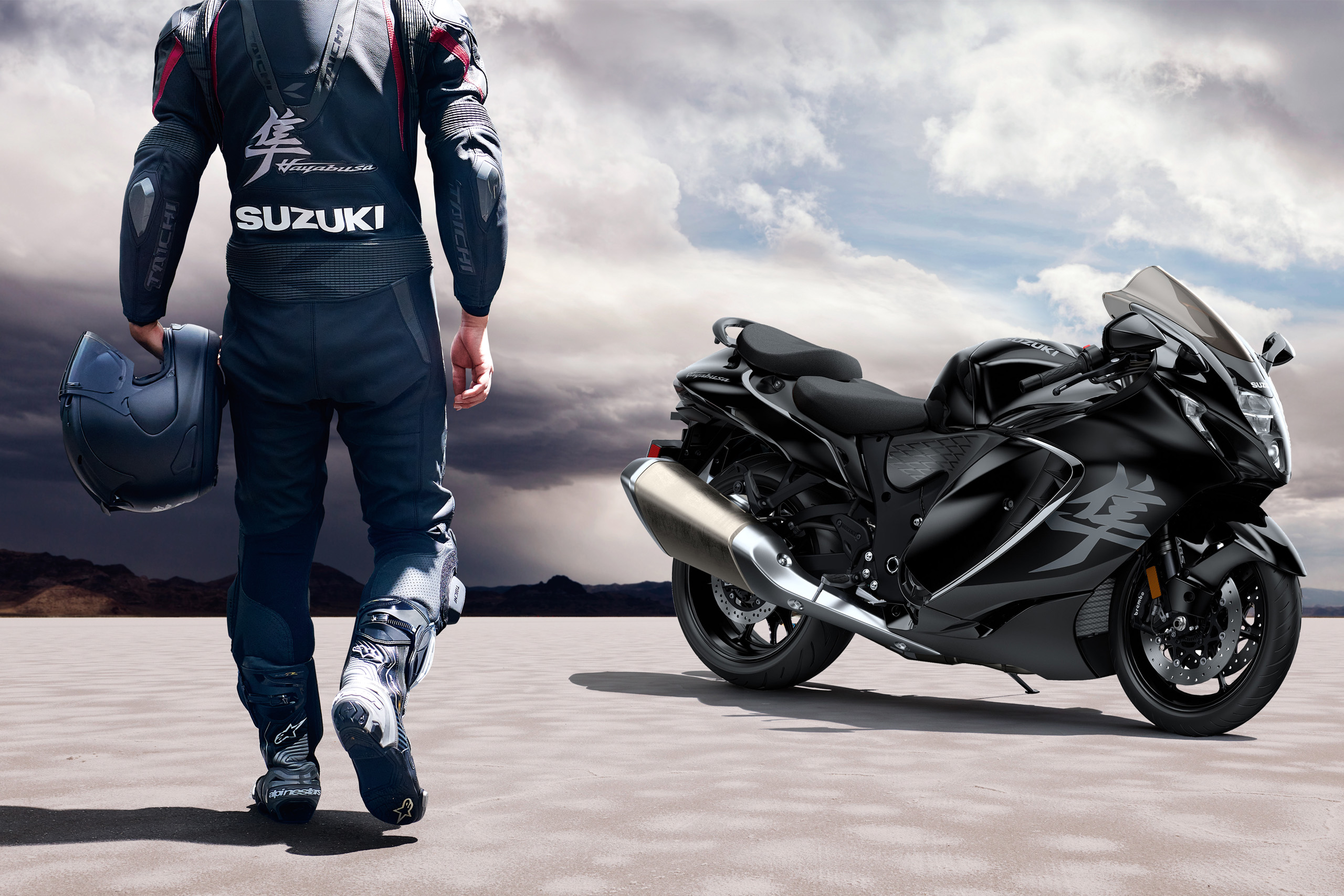
-
140kW / 9,700rpm Maximum Power
-
150Nm / 7,000rpm Maximum Torque
-
299km/h Maximum Speed
-
3.2 Seconds 0 - 100km/h
Introducing the 3rd Generation of Ultimate Sport
Famed for its abundant power, agility and majestic presence. Legendary for establishing levels of ultimate sport performance and retaining its position atop the class it created for over two decades. The latest generation provides even smoother power delivery, nimbler handling, and a collection of electronic assist systems that make the Hayabusa more controllable, predictable and reliable. And all this wrapped in a package with breathtaking style and grace.
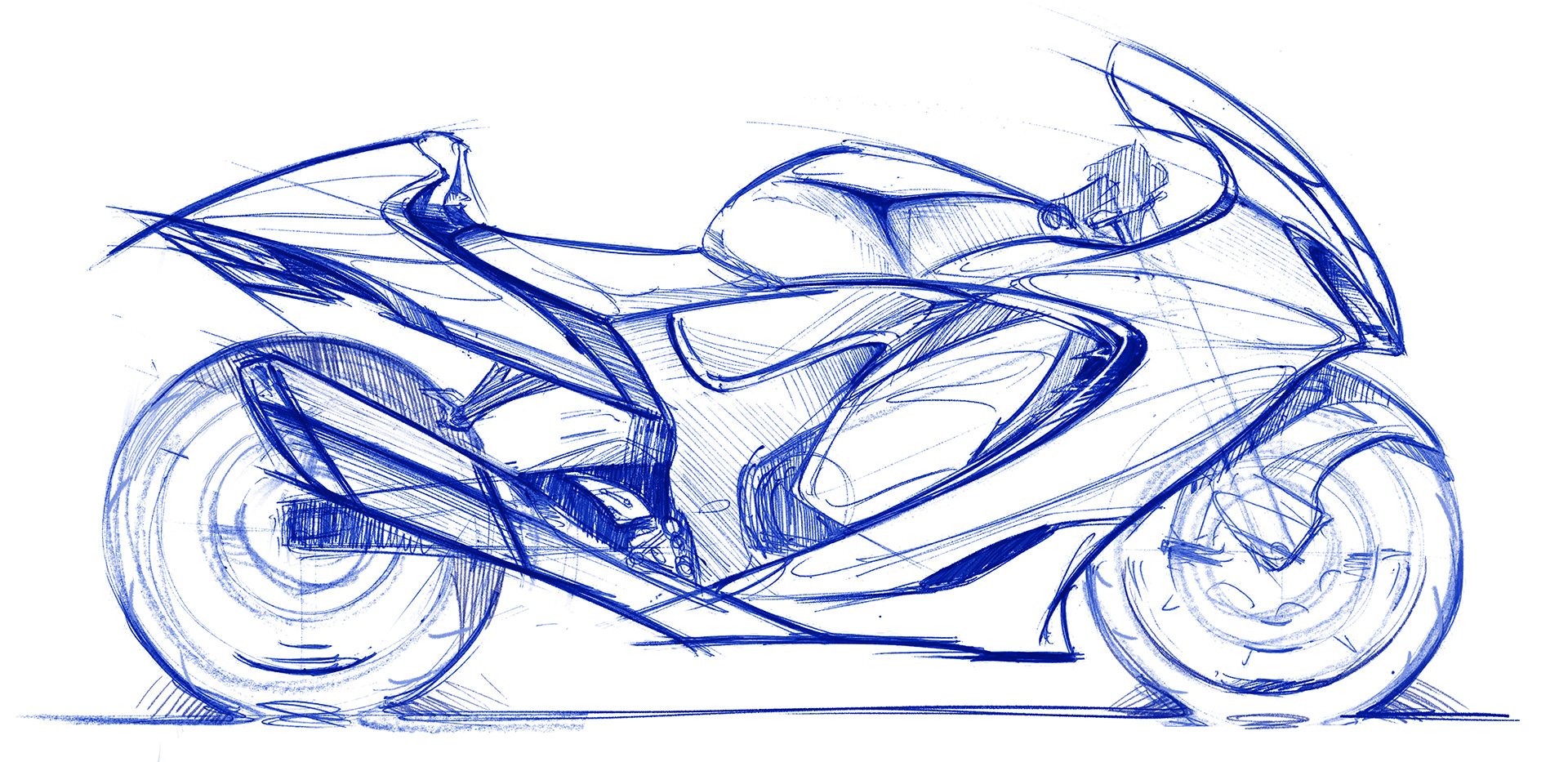
Design Concept
The Hayabusa’s unique styling and striking aerodynamic silhouette have made it instantly recognisable since the first generation was launched in 1999.
Low, long and wide, it’s a magnificent beast of a machine whose majestic stance screams of power, performance and instinct. The Hayabusa is instantly recognizable for its wind-cutting body and styling cues inspired by the peregrine falcon – the world’s fastest animal.
To bring a sophisticated appearance to the iconic Hayabusa, Suzuki’s design team incorporated distinct lines and shapes to achieve an expression of refinement and ultimate performance.
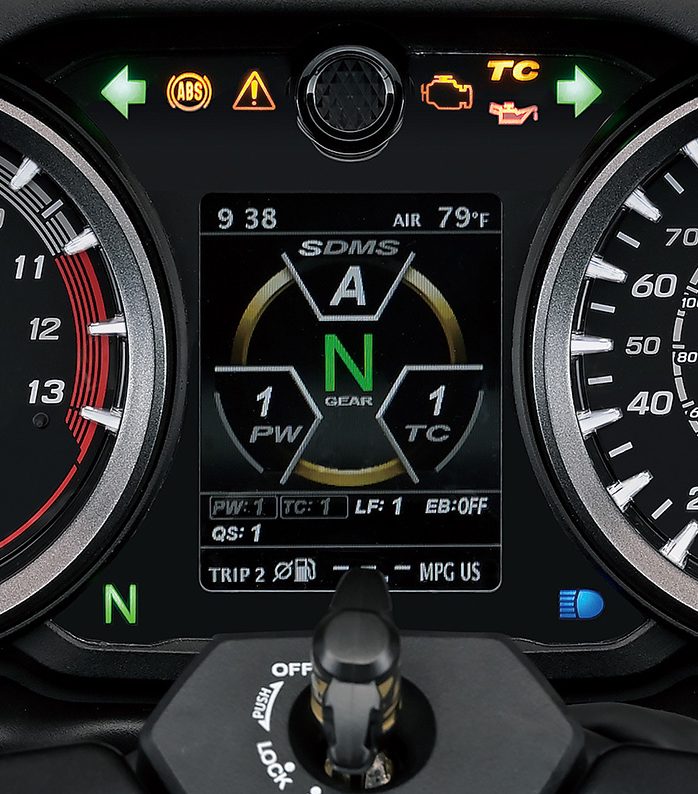
Electronics
The Hayabusa employs an advanced version of the Suzuki Intelligent Ride System (S.I.R.S.); a comprehensive collection of electronic rider aids, such as the Cruise Control and Bi-directional Quick Shift systems. Only the Hayabusa offers this premium suite of aids that simultaneously boosts performance and comfort.
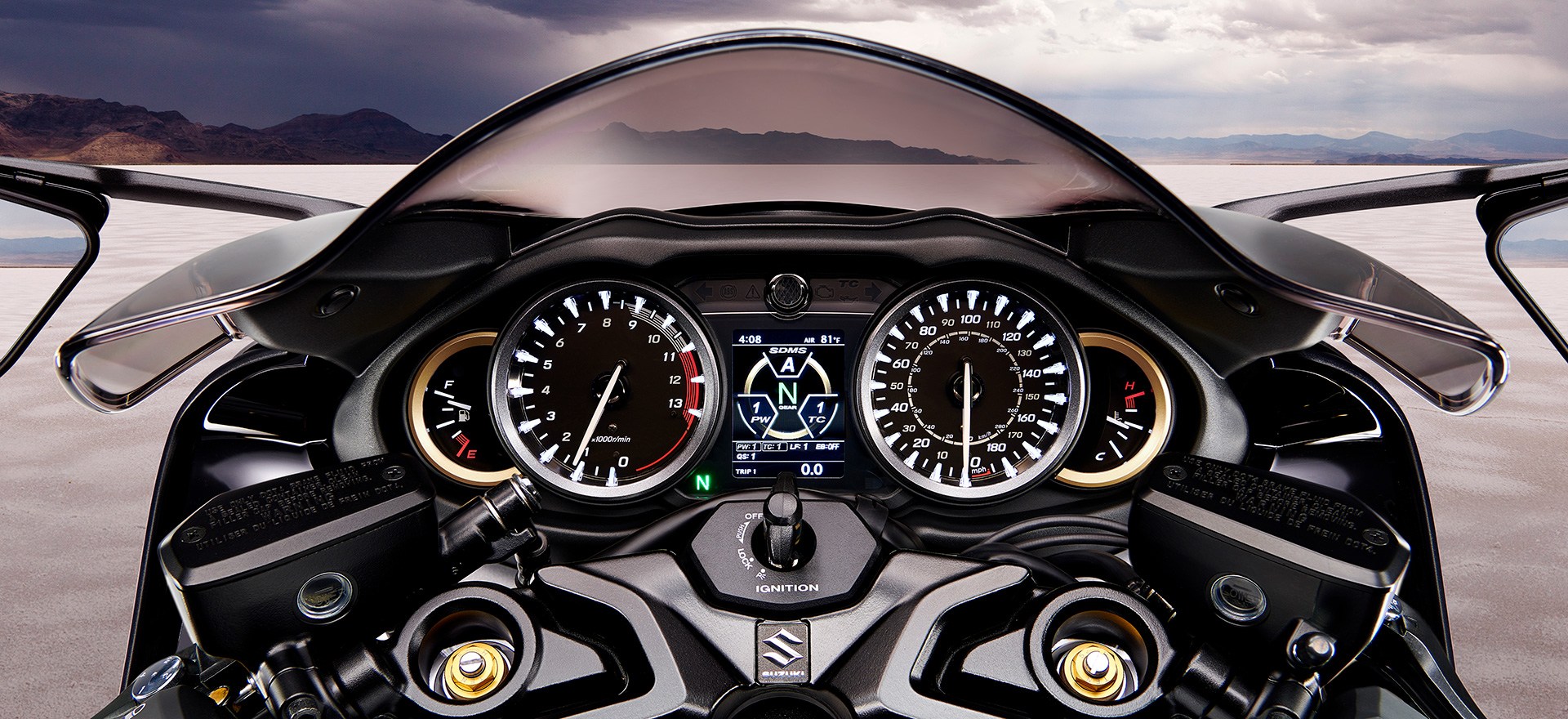
SDMS-α
Suzuki Drive Mode Selector Alpha (SDMS-α) groups together five advanced electronic control systems while enabling riders to select individual settings for each. It optimises performance characteristics and behaviour to best suit varying road surfaces, riding conditions and preferred riding styles.
Experiment with the different settings and benefit from the feedback each offers to hone your riding skills and build greater confidence while enjoying the ultimate riding experience.
The Suzuki Drive Mode Selector Alpha (SDMS-α) system provides you with a choice of three factory preset (A, B & C)
- Mode A is for active, sporty use
- Mode B is for general, all-around riding
- Mode C is for comfort and touring.
Additionally three rider-defined mode settings for the:
- Power Mode Selector
- Motion Track Traction Control
- Anti-lift Control
- Engine Brake Control
- Bi-directional Quick Shift systems.
You can also create three user-defined settings (U1, U2, and U3). These unique settings allow you to quickly and easily tune S. I.R.S. to match your riding style or favourite road.
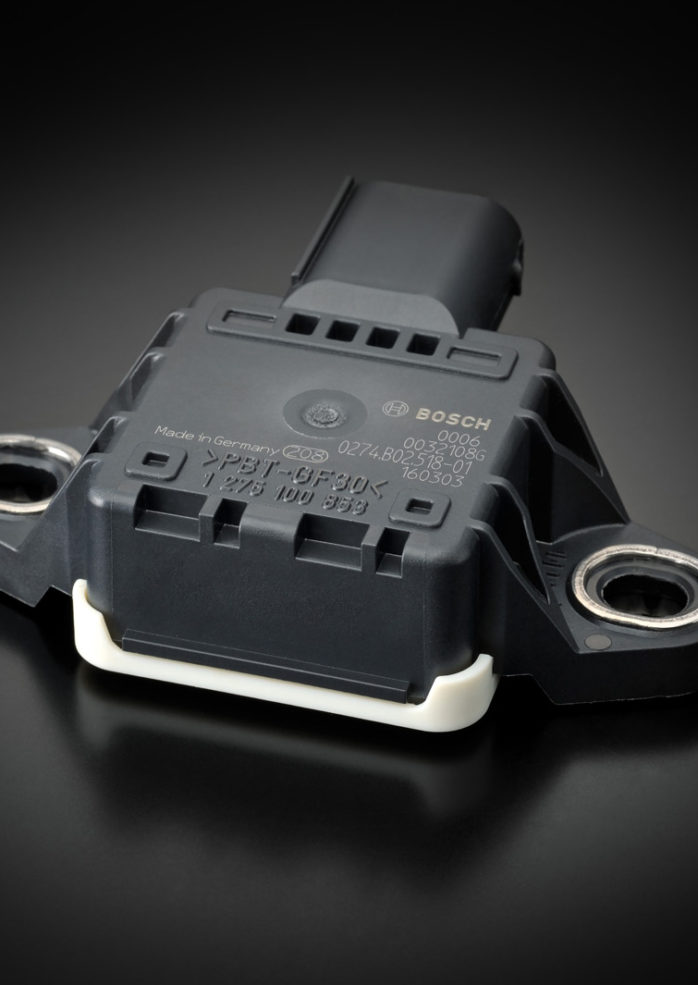
BOSCH 6-Axis IMU
Another component supporting S.I.R.S. and other Hayabusa technology is the Bosch Inertial Measurement Unit (IMU). The IMU measures six directions of movement along three axes. Combining accelerometers and gyroscopes in a single compact package, the IMU that constantly monitors the motorcycle’s position, movement, and acceleration and detects.
- pitch (forward or backward tilt)
- roll (leaning from side to side)
- yaw (turning in relation to initial direction).
These measurements are compared against one another as well as readings from wheel speed sensors to keep the motorcycle aware of its situation at all times and provides input for several S.I.R.S. controls.
Motion Track Traction Control
Takes traction control to a whole new level. Using data from the IMU to constantly monitor the amount of lean angle and effectively limit slip in corners as well as on straightaways. It provides greater stability at all times, enabling confident control in varying riding conditions while reducing stress and fatigue. The system offers a choice of 10 mode settings, and it can be turned off when preferred. The higher number the mode, the faster traction control is engaged and the more proactive the system is in limiting wheel spin.
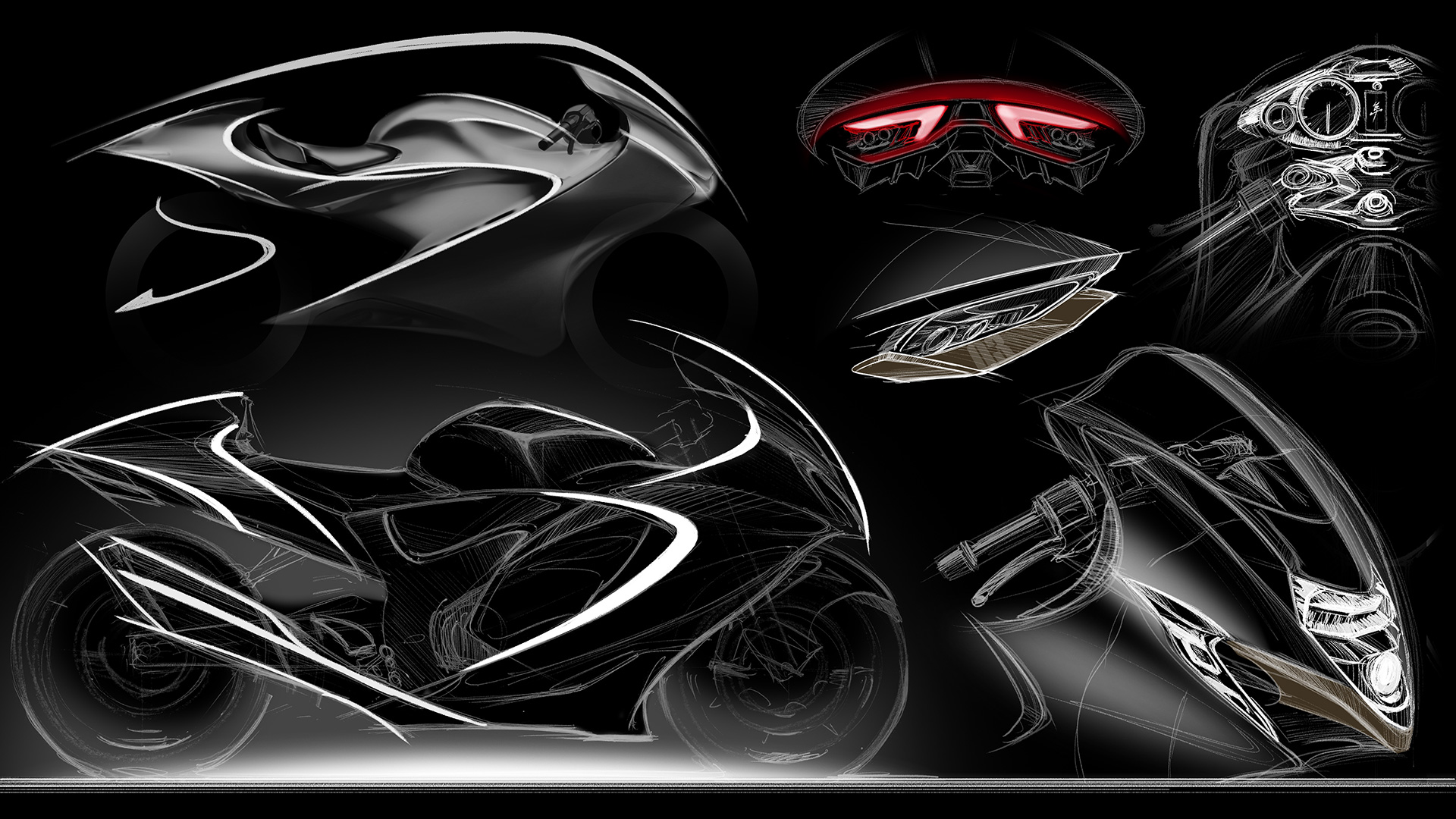
-
Launch Control
The Launch Control System (LC) helps ensure efficient launch and acceleration from a standing start. A selection of three mode settings lets the user match the engine speed at launch to their level of experience or confidence. Mode 1 limits engine speed on launch to 4,000 rpm, Mode 2 operates at 6,000 rpm, and Mode 3 — the fastest mode — operates at 8,000 rpm for the most aggressive take-off.
-
Anti-Lift Control
Suzuki has successfully developed an advanced system that maximises acceleration performance whilst preventing front wheel lift. Offering a choice of 10 modes when turned on, with Mode 1 providing minimal control and Mode 10 making it virtually impossible to lift the front wheel, even when fully opening the throttle with a passenger on the back.
-
Engine Braking Control
This system cancels out the effect of engine braking to suppress rear tyre sliding or skipping and provide even smoother, more controllable behaviour than ever before. A choice of three modes plus an OFF setting allows the rider to control the effective strength of engine braking to match riding conditions or user preference.
-
Bi-Directional Quick Shifter
Provides the ability to shift gears up or down quickly without the need to operate the clutch or throttle. Offering two modes, Mode 1 reacts more quickly to replicate racing-style response, while Mode 2 offers a lighter touch. The assist & slipper clutch functions of SCAS help ensure even smoother up and down shifts when using QS or manual clutch operation.
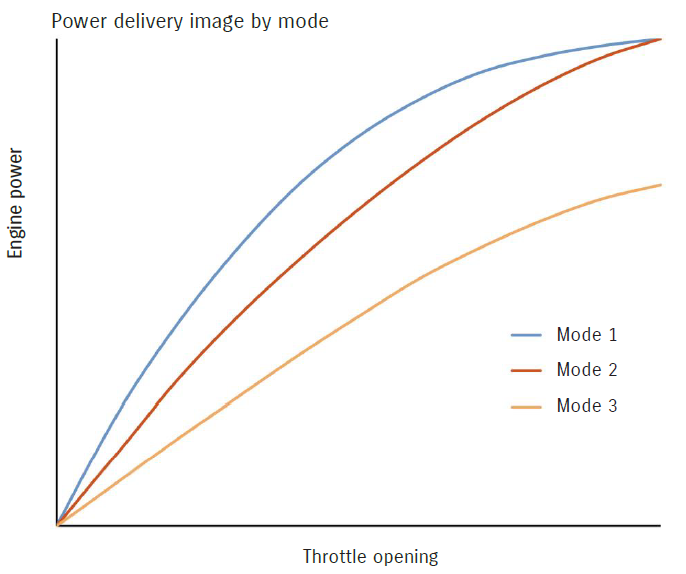
Power Mode Selector
Riders can select between three different engine output modes that control power delivery to match road and riding conditions.
Mode 1: provides the sharpest throttle response and delivers maximum power. It’s a solid choice for the experienced rider out for a spirited run.
Mode 2: provides softer throttle response and more linear power delivery. That makes it practical for everyday riding.
Mode 3: provides the softest throttle response and features a more gentle power curve with reduced maximum output. It’s well suited to riding on wet or slippery roads.
-
Cruise Control
Maintains the selected road speed without having to hold the throttle open. You can easily adjust the speed upward or downward using the mode/set switch on the left handlebar. Set the cruising speed from approximately 31km/h to 200km/h while riding at 2,000 to 7,000 rpm in second gear or higher. The handy resume function re-engages the system and accelerates to the most recent speed setting after braking.
-
Active Speed Limiter
Suzuki’s Active Speed Limiter is a first in the motorcycle industry. This highly practical system allows you to set a speed limit you do not wish to exceed, which helps lessen concerns about speeding or driving faster than intended.
-
Emergency Stop Signal
Another first on a motorcycle in Suzuki, is the Emergency Stop Signal function that rapidly flashes the front and rear indicators to alert following vehicles if the brakes are activated suddenly at speeds of 55 km/h or higher.
-
Hill Hold Control
Helps hold the Hayabusa still when it is you’re stopped on an incline, providing confidence so you can focus on pulling away more smoothly to proceed up the hill. When stopping upward on a hill and applying the brakes, the system automatically operates the rear brake for around 30 seconds to prevent the motorcycle from rolling backward, even if you release the brake lever or pedal.
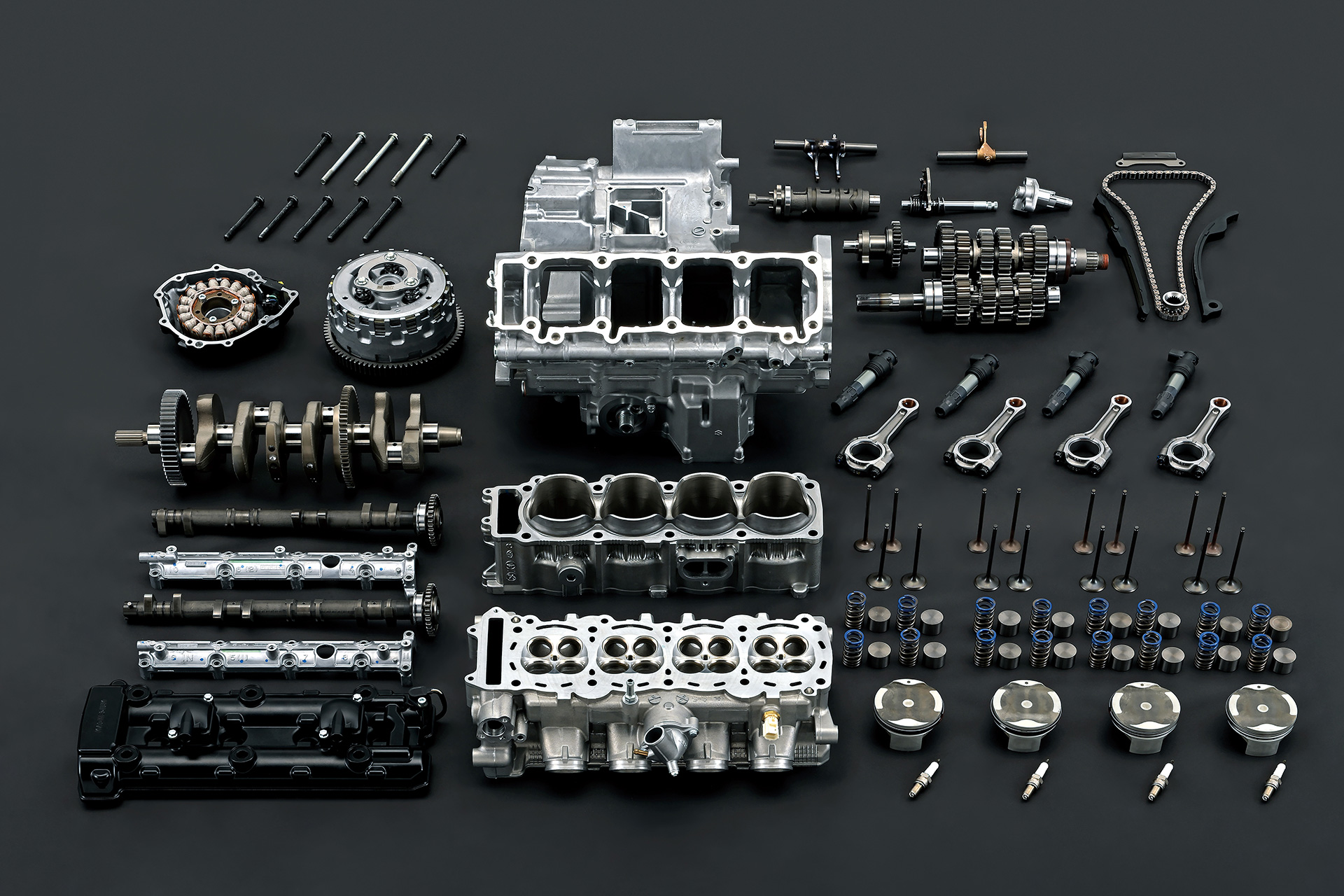
Engine
The latest iteration of the Hayabusa’s legendary 1340cm³, four-cylin
Inheriting the proud legacy of the Ultimate Sport Bike that originally established the category, the Hayabusa’s engine is built to deliver the ultimate riding experience for the long run.der, DOHC engine is fed by Ride-by-Wire electronic throttle bodies with dual fuel injectors feeding each cylinder, mixing with pressurized air from the Suzuki Ram Air Direct (SRAD) intakes in the nose of the aerodynamic fairing.
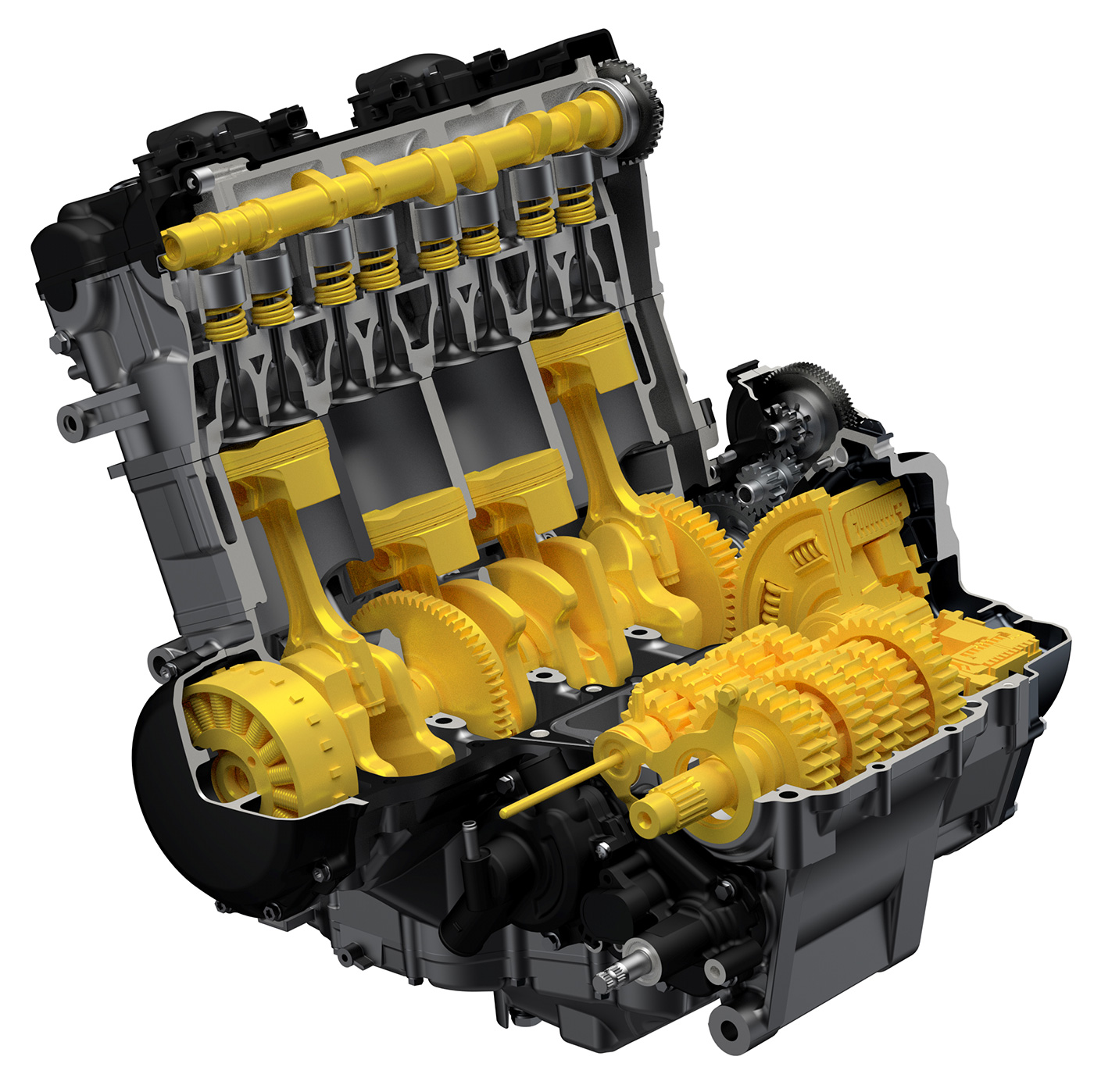
Legendary power and reliability
Although the Hayabusa engine is already renowned for its reliability, durability and longevity, the development team was committed to further evolving it to a higher level.
U-shaped cutouts in cylinder’s bores, Suzuki Composite Electrochemical Material (SCEM), and Physical Vapor Deposition (PVD), are all engineered for reducing friction and improving strength and durability.
The lightweight design of the crankshaft, connecting rods and pistons reduces internal vibration, which in turn contributes to greater engine durability.
The Gen III is also the fastest-accelerating Hayabusa yet, boasting quicker 0-100km/h and 0-200m times than the previous iterations.
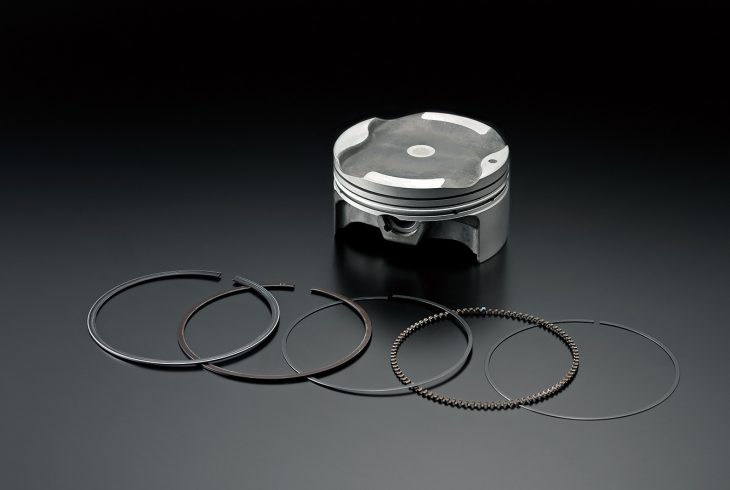 Forged Pistons
Forged Pistons
While the Hayabusa continues to employ forged pistons with chrome nitride PVD coated oil control rings, it now adopts a new piston shape that has been optimised to match the new TSCC shape. Changes to the crankshaft oil passages increases the flow of the piston cooling oil jets, which in turn cool the pistons more efficiently. Advances in CAE analysis made it possible to remove enough material to reduce the weight of each piston by 26 grams. This reduces internal vibration, which in turn contributes to enhanced durability.
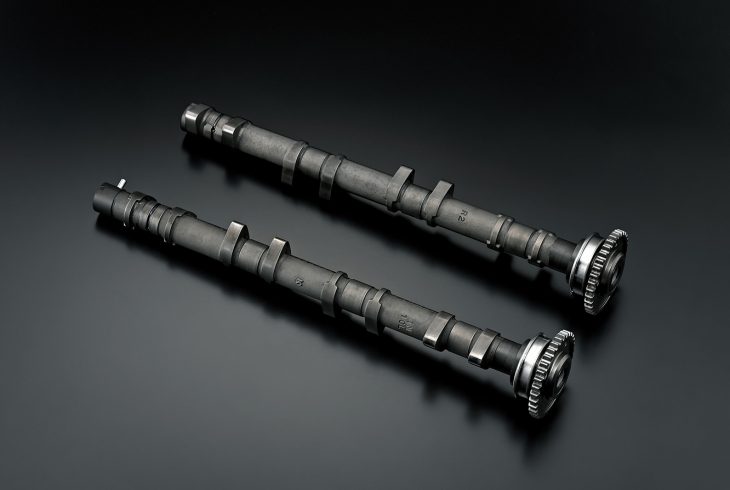 Revised Cam Profile
Revised Cam Profile
The exhaust camshaft’s lift has been increased and timing for both camshafts updated to reduce valve opening overlap, boosting low- to mid-range engine performance.
Lightweight titanium valves with higher rate valve springs match the camshaft changes to maintain accurate valve control.
The redesigned cam chain tensioner minimizes chain runout and includes a Tefl on coating on the slipper surface to reduce mechanical loss.
Fired by independent ignition coil-caps in each cylinder, iridium spark plugs produce more complete combustion and last longer than conventional plugs.
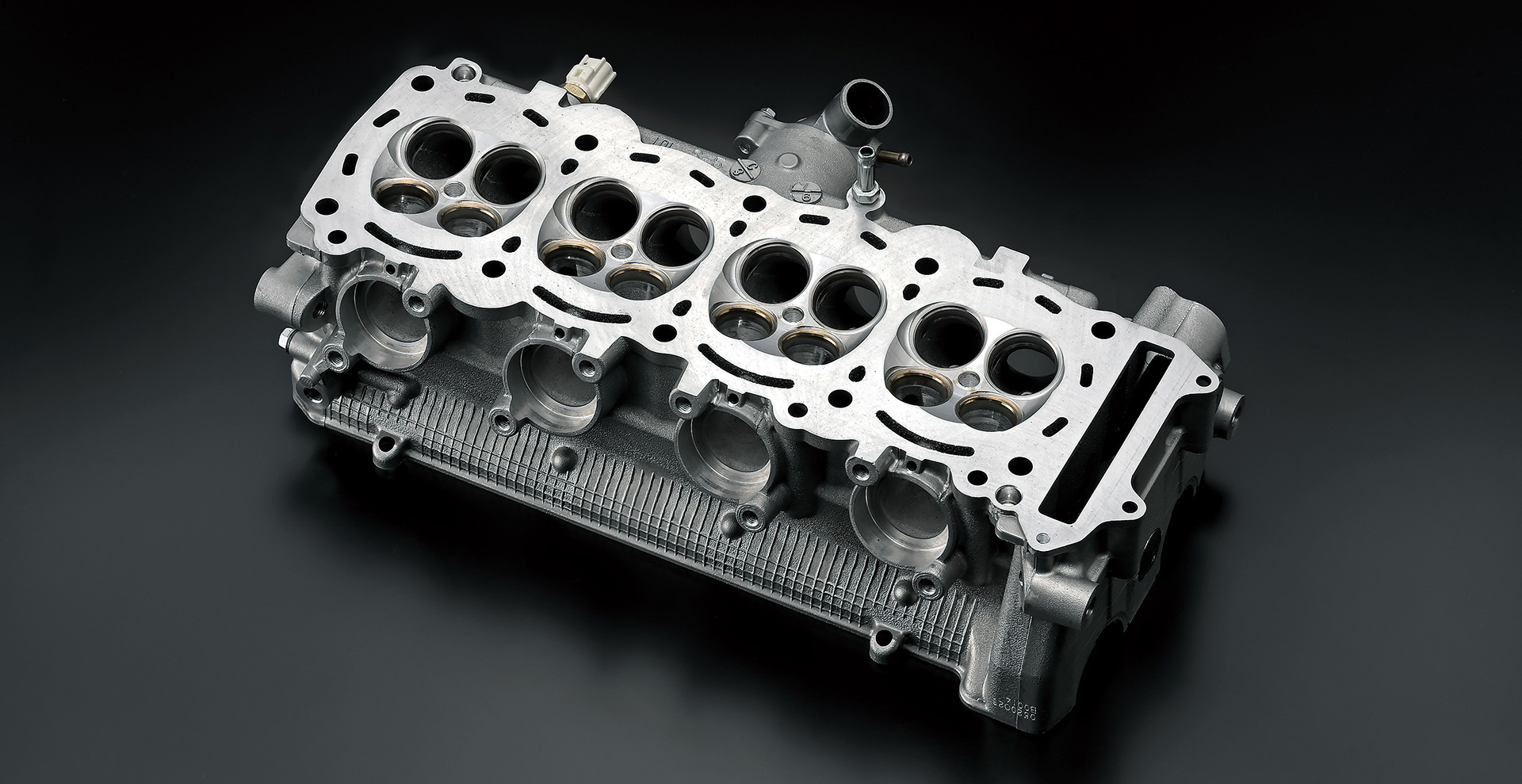
Suzuki Twin Swirl Combustion Chamber (TSCC)
Changes to the design of the Twin Swirl Combustion Chamber (TSCC) promote faster and more efficient burning of the fuel-air mixture. It employs a four valve design with each pair of intake and exhaust valves positioned in adjoining semi hemispherical depressions. During the intake stroke, these depressions channel the incoming air fuel mixture into two controlled high speed swirls. Squish areas in the front and back of the chamber accelerate the speed of the swirls, igniting the mixture more quickly and effectively. After closely examining and analysing the flow of air as it entered the chamber to further leverage the inherent strengths of the TSCC design, the combustion chamber around the intake valve was machined further on the new Hayabusa engine. This expands the valve curtain area and improves the flow coefficient by 5% as the valve begins to open and reaches 5mm in lift height. As a result, this change increases combustion efficiency and helps satisfy Euro 5 emissions standards.
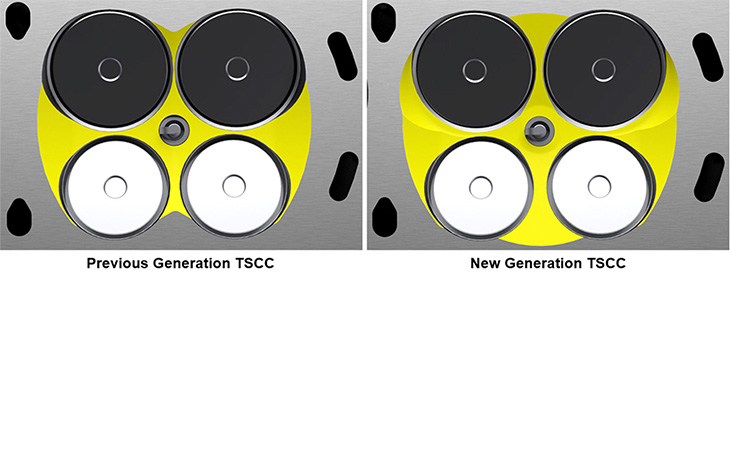
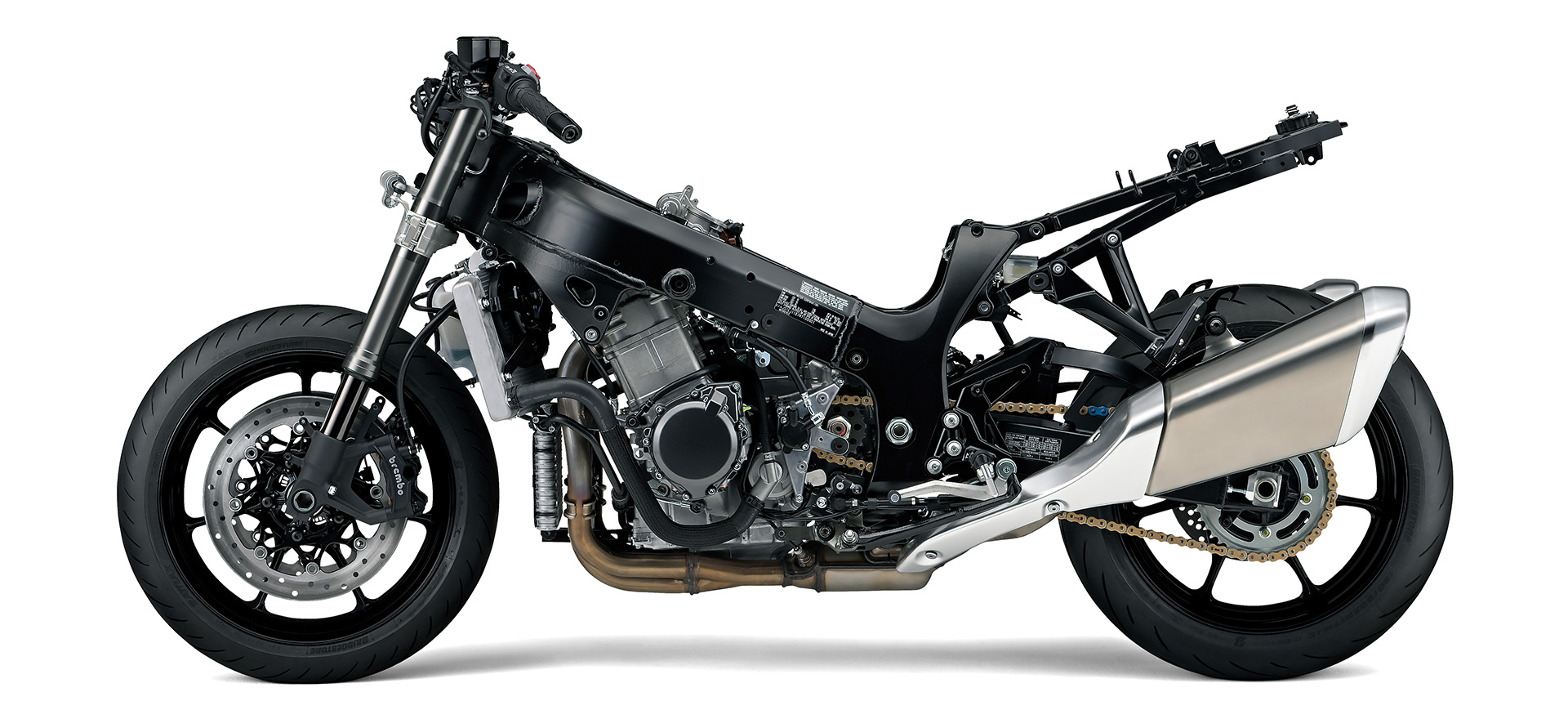
Chassis
The Hayabusa’s chassis is designed to empower the rider with sure footing, nimble handling and predictable control that inspires confidence and enhances the riding experience. It delivers a smooth and comfortable ride that absorbs everything the road surface throws at it and responds faithfully to the rider’s will. It effectively transfers the power of its legendary powerplant to the pavement while fully leveraging its intelligent control systems to run and brake effectively, whether riding straight or leaning through corners.
The Hayabusa’s tried and true twin spar aluminium frame and swingarm incorporate aluminium castings along with extruded aluminium sections that lend the right amount of suppleness and strength to its overall rigid alloy frame structure. While more costly and demanding to fabricate, extruded aluminium sections pay off in achieving the optimal overall balance required by a machine that delivers ultimate performance and reaches a top speed of 299km/h. This is why extruded aluminium can also be found used on a number of supercar frames, and why the Hayabusa also leverages its benefits.
The lightweight, redesigned sub-frame is made of longer rectangular steel tubing for ample weight-carrying capacity. The new sub frame designed in conjunction with the bike’s styling changes features straighter pipe sections and reduces weight by 700 grams.
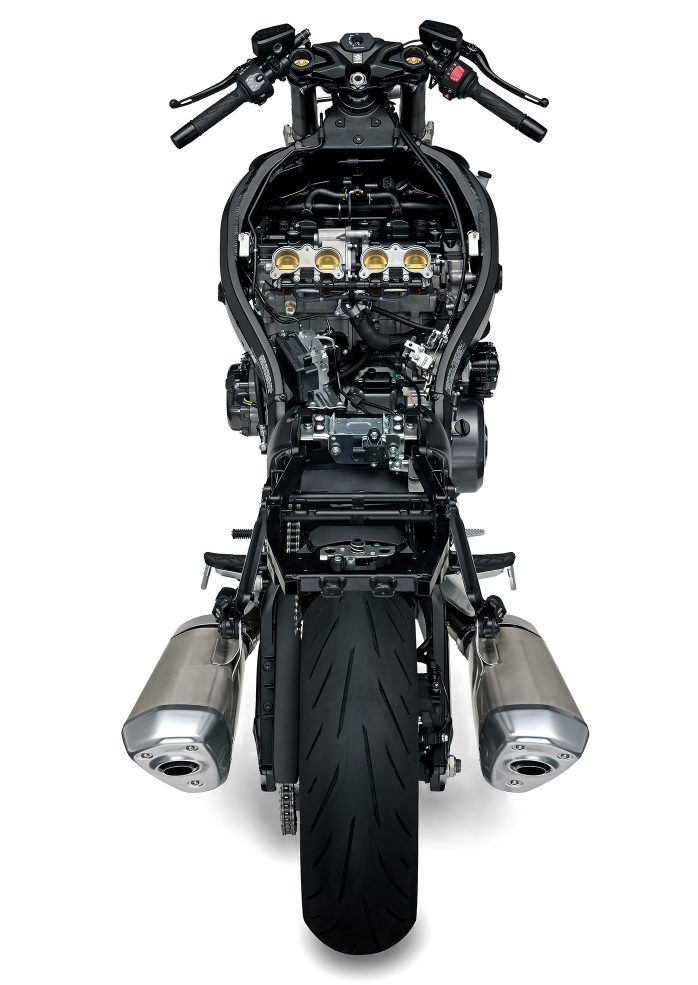
Updated KYB Suspension
Both front and rear suspension settings have been optimised to eliminate any hint of oversteer at lower speeds and achieve a stable ride with neutral feel at all speeds. These combined with the low centre of gravity, long wheelbase and new tyres result in nimble handling along with reassuring straight line stability at highway speeds.
Up front is an updated version of the previous model’s fully adjustable KYB inverted forks with 43mm outer diameter diamond-like coating (DLC) coated inner tubes. The internal structure has been revised to further improve the forks’ ability to absorb the road surface and ensure a smoother, more stable ride with optimum grip. In similar fashion, the internal structure of the fully adjustable KYB rear shock absorber has also been updated to help optimise comfort and straight line stability.
The rear shock absorber has threaded spring preload adjustment collars plus rebound and compression damping force adjusters.
A steering damper attached to the frame and the lower fork bracket suppresses unwanted vibration and steering forces to provide a light steering feel at lower speeds.
Revised Rider Triangle
Mounting the handlebars 12mm closer to the rider vastly improves comfort and reduces fatigue, particularly when touring or taking other long rides It also enhances handling when enjoying a sporty ride by giving the rider better feedback on how well the front tire is gripping the road, by better supporting the rider’s posture to improve stability when braking, and by offering the rider greater freedom in movement to control cornering.
The black-anodized, adjustable clutch and front brake levers have carefully crafted shapes to aid rider control, and feature slots at the ends that reduce the chance of wind pressure pushing against the levers.
Fit for a Passenger or single rider
The passenger grab rail is positioned to make it easy to grasp.
The passenger seat and grab rail can be replaced by an optional, color matched single seat cowl that acts as a lumbar stop for the rider during solo rides, while enhancing the Hayabusa’s performance-related styling.
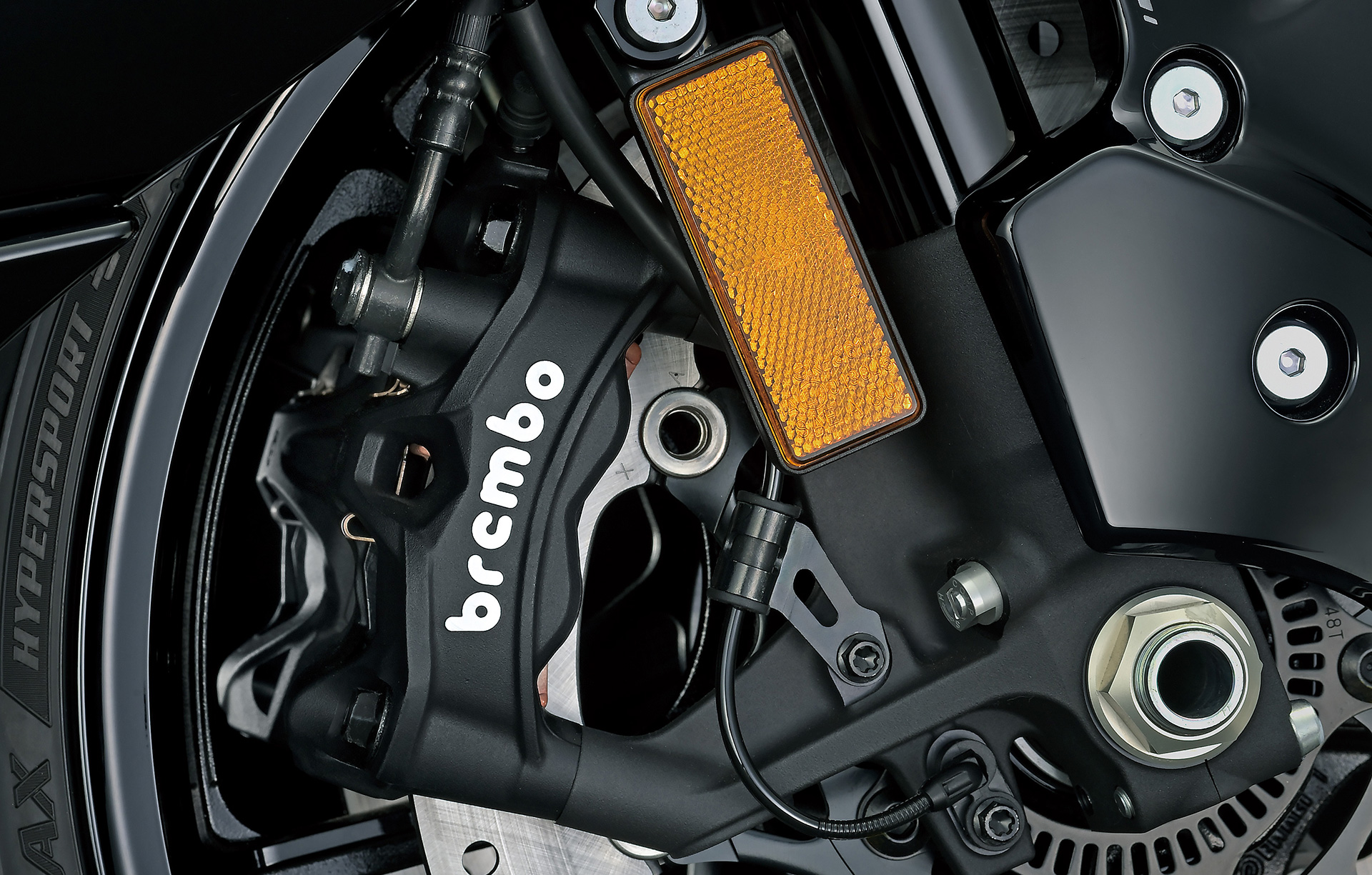
Brembo Stylema® front brake calipers
Innovative Brembo Style m 4-piston front brake calipers feature a light, compact and carefully sculpted design that is intended for use on high-performance motorcycles. They increase airflow around the brake pads to cool more quickly and deliver immediate response.
The Stylema front brake calipers grasp a pair of 320mm stainless-steel full-floating discs with a hole pattern that further helps optimize cooling efficiency.
Motion Track Brake System
Motion Track Brake system combines vehicle posture data from the IMU with front and rear wheel speed sensor data to allow ABS activation not only in a straight line but also when leaning into a corner. The bike is therefore less likely to try to push itself upright or lose traction, instead maintaining its radius and lean angle to better trace your intended line through the corner.
Braking confidence is further enhanced via the Combined Braking System which provides braking power to the both front and rear brakes when operating the front brake lever.
Body Color
*Specifications shown in this 360° Viewer are subject to change by Suzuki at any time without notice.
Styling
Optimised aerodynamics and wind protection provide comfort while improved braking performance inspires rider confidence.
The Hayabusa’s vertically stacked headlight continues to feature intentionally large and, bold styling. Even so, the design for the new generation assumes a tighter, more angular look that nests neatly between the large Suzuki Ram Air Direct (SRAD) intake ducts and melds seamlessly with the narrower lines of the windscreen’s lower edge. Black parts incorporated inside its housing add a striking new touch and make the assembly less conspicuous. Flanking the air intakes are new position lights with integrated indicators. Together they form a single, clean vertical line that flows back along the cowling and does away with the bulbous protrusions as featured on previous iteration.
The English “Hayabusa” and Japanese Kanji logo designs have been updated to strongly evoke an image of speed and sophistication. Both logos adopt sharper, more highly stylised strokes, and the English logo features a long cross stroke on the “H” that emphasises a sense of speed.
In addition to the bold character on the side of the cowling, smaller versions of the Japanese logo add highlights on the black shroud over the projector type high beam headlight, on the front of the single seat cowl available as a genuine accessory, and even as a start-up animation on the TFT LCD panel. Groupings of V-shaped accents inspired by the peregrine falcon’s hackles (neck feathers) are featured on the black cladding below the fuel tank, in front of the air intakes on the cowling, and on the foot pegs.
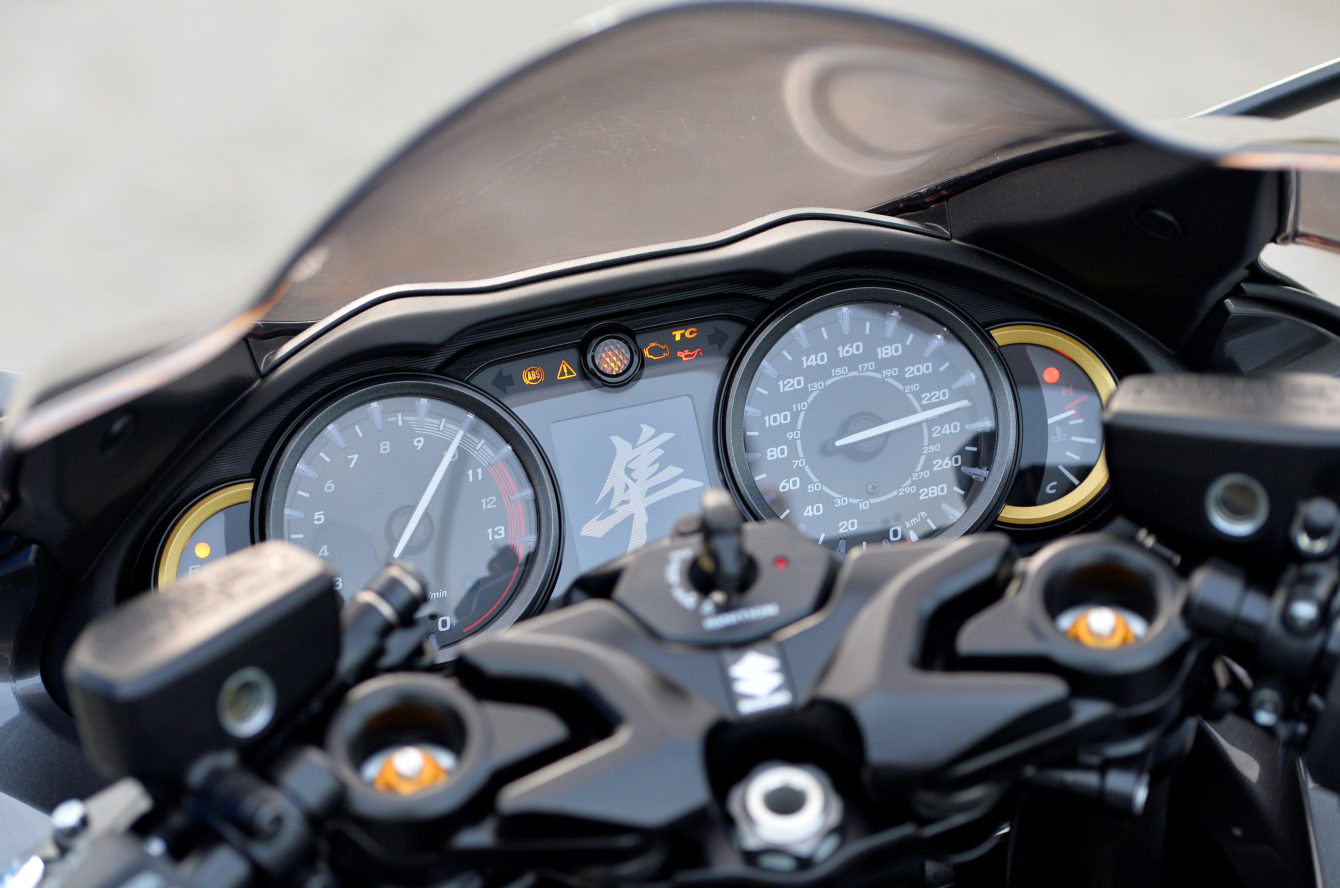
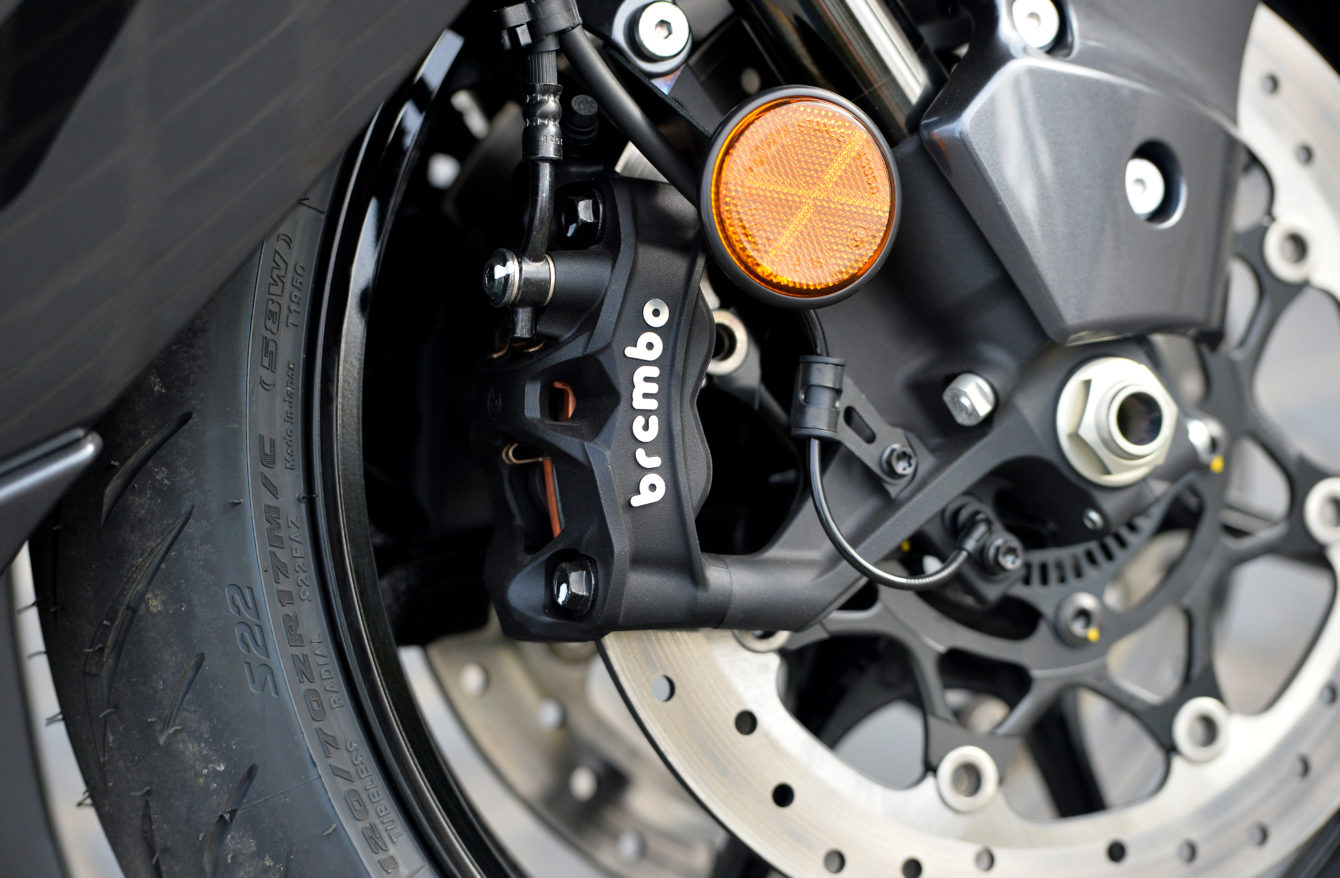
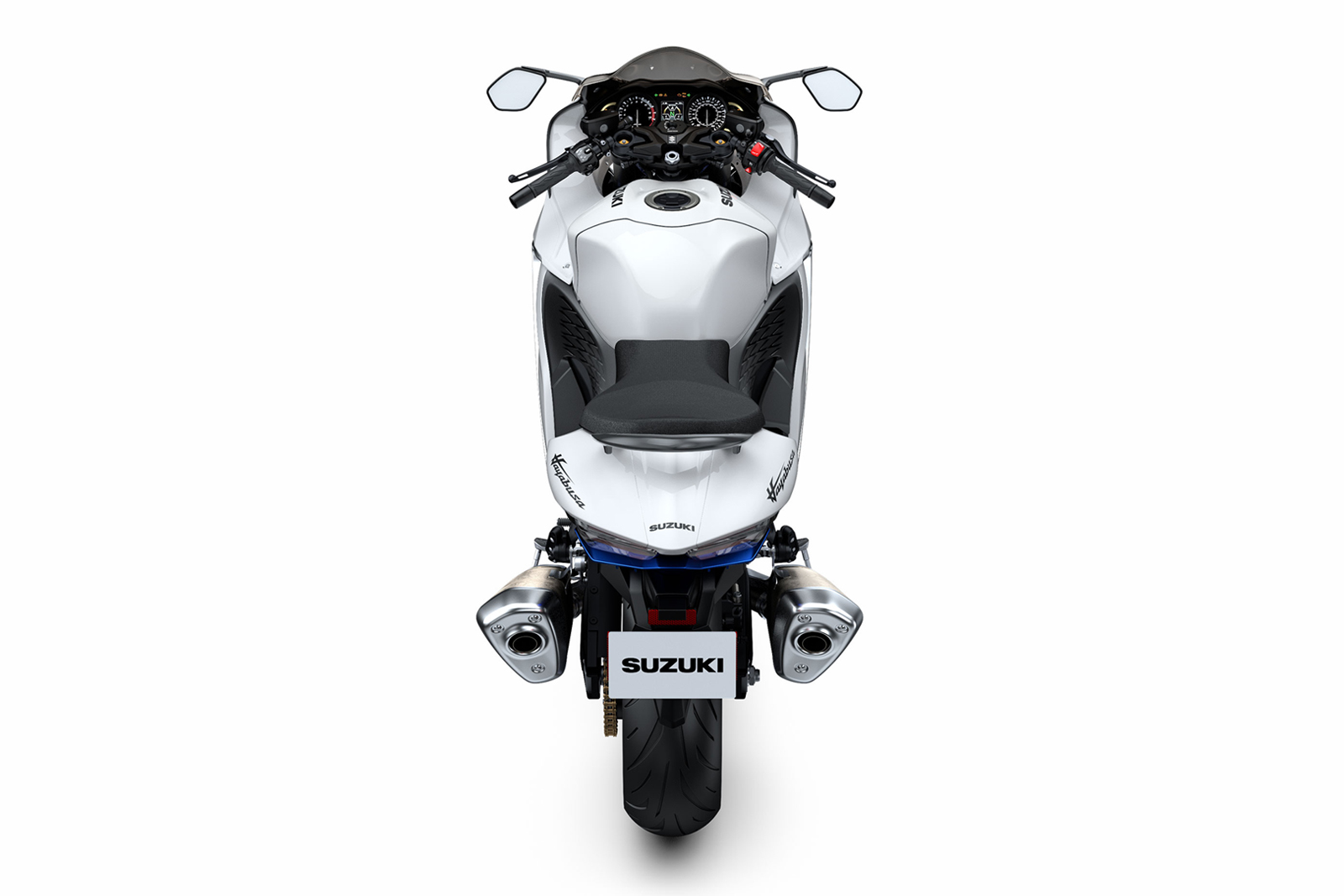
Aggressive Stance
Great effort was devoted to designing thinner, more compact mufflers that draw a straight line sweeping up from the exhaust pipes.
This not only makes the rear end look lighter, its also helps portray a forward-focussed image. A sharp new upswept tail design further emphasises the Hayabusa’s aggressive stance and eagerness to perform.

Instruments & Lighting
The Hayabusa’s familiar instrument cluster skillfully blends large analog gauges flanking a multifunction TFT LCD display to offer outstanding functionality and premium styling in a familiar layout you are sure to love.
Riders love the outstanding functionality and familiar layout of the Hayabusa’s instantly recognisable instrument cluster. Now it benefits from a number of carefully considered touches that give it a modern new look and make its functional brilliance shine even brighter.
The large analogue tachometer and speedometer gain a fresh, more attractive appearance. Features include bigger, bolder numbering that improves readability. Raised scale markings around the periphery of each meter use LED lighting to provide a clearer view and faster recognition, both at during the day and at night. Carrying the theme of gold coloured accents throughout the cockpit area, the analogue fuel and coolant temperature gauges that flank the meters are ringed in gold, as are the SDMS and Active Data display screens on the TFT LCD panel.
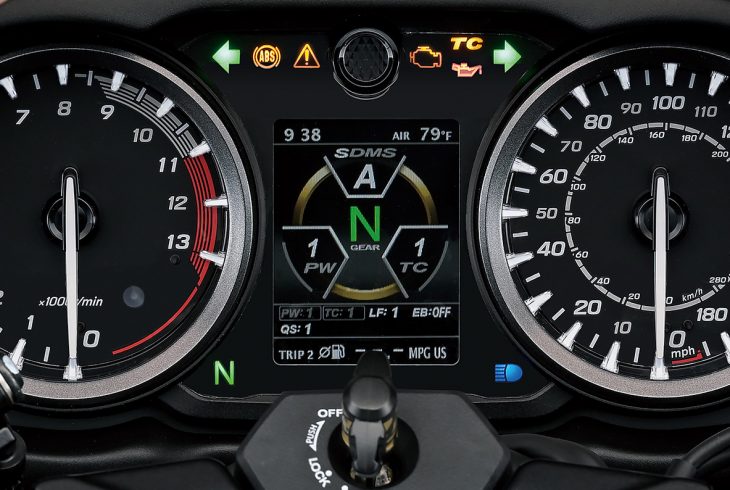
TFT LCD Panel with Active Data Display
One standout new feature is the TFT LCD panel mounted in the centre, between the two main meters. It displays either the current SDMS-α systems settings or an Active Data display that shows lean angle (with peak hold function), front and rear brake pressure, rate of forward/reverse acceleration, and the current accelerator position. The panel also shows clock, gear position, odometer dual trip meter, ambient temperature, instantaneous fuel consumption, riding range, trip time, and average fuel consumption on and voltmeter displays.
An additional feature of the LCD panel is a brief animation of the Hayabusa kanji character that plays when the ignition key is turned on. This playful presentation is pleasing to the eye and heightens anticipation of the ride to come. A second animation featuring the Suzuki logo plays before the display is turned off.
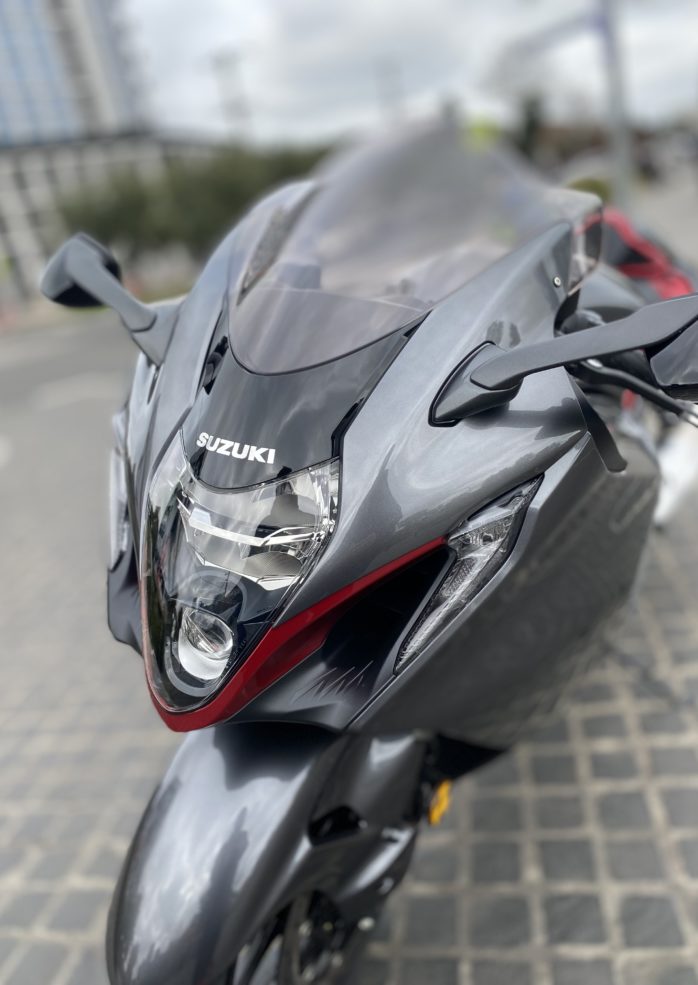
Multi-LED Headlight
Both the low beam and projector type high beam headlights adopt LEDs that provide clear illumination and help make the Hayabusa clearly visible to pedestrians and other traffic at night. The vertically stacked design creates a sharp new look with its large, bold styling and eye pleasing presence.
Attention to achieving a memorable look extends to every detail. The two upper and two lower LEDs for the low beam are mounted in the corners where they shine across a reflector panel and fill the light assembly with attractive illumination.
Fine touches throughout the headlight assembly include the use of black parts that heighten the sharp looks, as well as the inclusion of the Hayabusa kanji character on top of the black cowl above the high beam lamp.
Integrated LED Indicators and Position Lights
Hayabusa’s front turn signals are incorporated in the position lights, a first for a Suzuki motorcycle. An illumination scheme using white lighting for the position light with the indicators flashing in orange when they are on creates a unique overall effect that heightens the sense of a luxurious riding experience.

LED Rear Combination Lights
The bold new LED taillight and rear indicator design creates a single wide, sharp accent running horizontally across the bottom of the tail section.
Each of the left and right combination lamps house the tail/brake light and indicators, with a clear lens over the taillight and a clear smoke lens over the indicator portion.
*Shown with optional Genuine Accessory Seat Cowl.
Specs
-
Displacement
1340cc -
Engine
In-line four-cylinder, liquid-cooled, DOHC -
Transmission
6-Speed constant mesh with back-torque-limiting clutch -
Front Suspension
43mm KYB inverted diamond-like coated (DLC) forks with adjustable compression and rebound damping and spring preload -
Rear Suspension
Link type, KYB shock with adjustable compression and rebound damping and spring preload -
Front Brakes
Brembo Stylema®, Radial-mount 4-piston calipers, dual 320mm floating discs with ABS -
Rear Brakes
Nissin single-piston caliper, 260mm disc with ABS -
Length
2180mm -
Width
735mm -
Height
1165mm -
Wheelbase
1480mm -
Seat Height
800mm -
Fuel Capacity
20.0L -
Wet Weight
264Kg -
Tyres - front
120/70ZR17M/C (58W), tubeless -
Tyres - rear
190/50ZR17M/C (73W), tubeless -
Warranty
3 Year Unlimited Kilometre (2 Year Std + 1 Year Bonus)
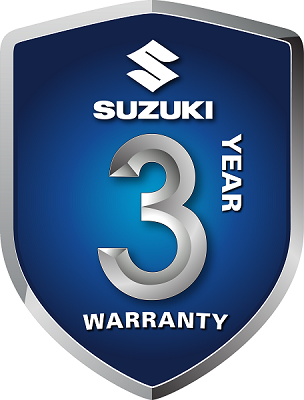
Bonus 12-month Warranty Extension
Suzuki Scooters & GSX-R, GSX-S, Hayabusa, SV and V-STROM road registered models purchased after 1st July 2021 are eligible for an additional bonus 12-month warranty extension (3 Years / 36 months in total) if the following conditions are met:
To qualify, owners simply need to ensure their applicable Suzuki motorcycle is serviced and maintained in accordance with the product service scheduled as outlined in their owner’s manual based on time or mileage, whichever occurs first.
Service inspections must also be performed exclusively by an authorised Suzuki Motorcycle dealer or appointed Suzuki Service agent using only genuine Suzuki parts and ECSTAR oil.
GENUINE ACCESSORIES
Explore the full range of Genuine Suzuki Accessories available for the Gen III Hayabusa
-
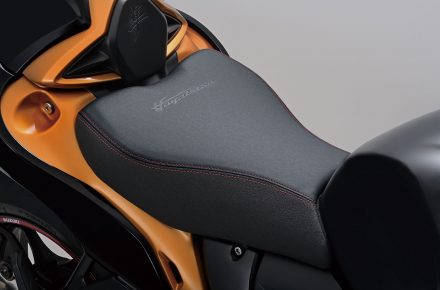
Hayabusa Premium Seat
Premium seat features grippy material, red double stitching and the ?Hayabusa? logo for that additional touch of class to your Hayabusa. FITMENT: Hayabusa GEN III
-
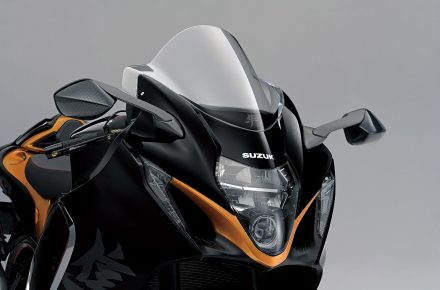
Hayabusa Touring Screen
Clear type wind screen offering increased wind protection due to being 38mm higher than the standard screen. The shape of the wind screen has been ...
-
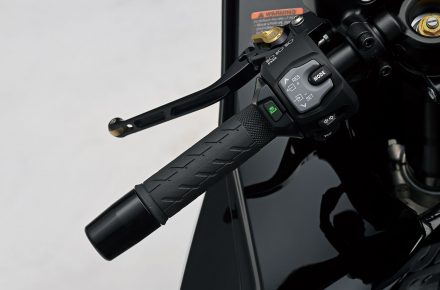
Hayabusa Heated Grip Set
Features 3 levels of adjustable heat temperature to keep your hands warm in cooler conditions. FITMENT: Hayabusa GEN III
-
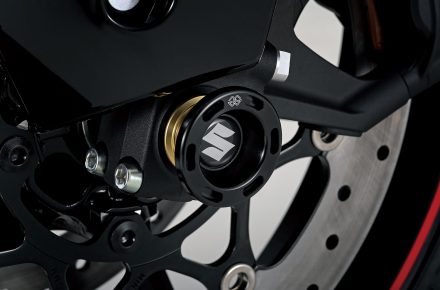
Hayabusa Front Axle Slider
Front axle slider with 'S' logo. Helps reduce impact damage around front axle in the event of a fall. Unique design, easy to install. FITMENT: ...
-
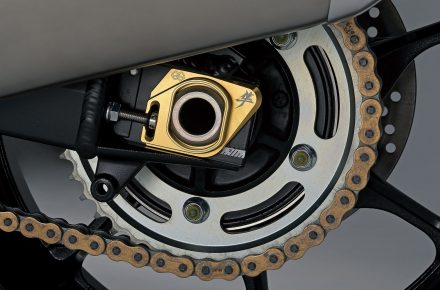
Hayabusa Chain Adjuster Blocks
Gold anodised aluminium chain adjuster block set featuring the Hayabusa Kanji logo. FITMENT: Hayabusa GEN III
-
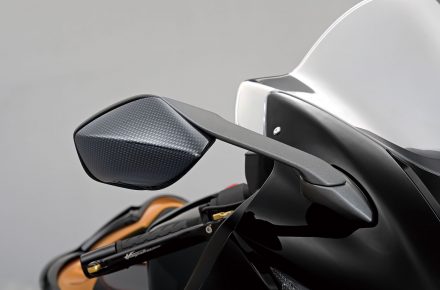
Hayabusa GEN III Mirror Cover Set – Carbon Pattern
Carbon pattern design gives your Hayabusa a custom look. Fitment: Hayabusa GEN III
-
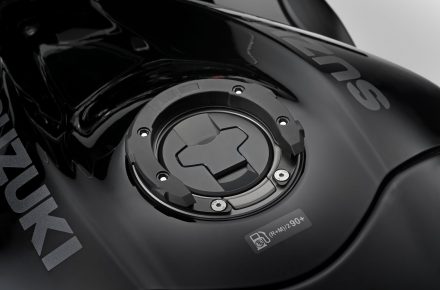
Hayabusa GEN III Tank Bag – Ring Fixation
Ring fixation is required for installation of Large Ring Lock Tank Bag (990D0-04600) or Small Ring Lock Tank Bag (990D0-04300). FITMENT: Hayabusa GEN III
-
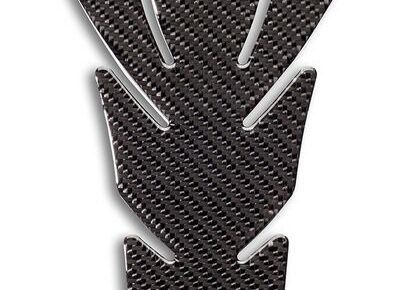
Hayabusa Kanji Tank Pad
Help protect your fuel tank against scratches while enhancing the style of your motorcycle with these fill color graphic polyurethane coated custom tank pads. These ...
-
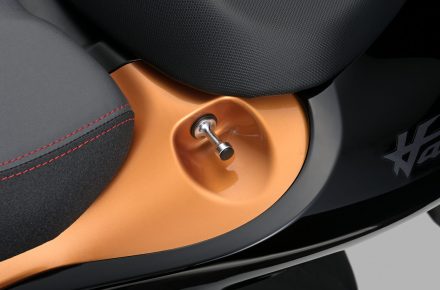
Hayabusa Luggage Hook Set
Convenient luggage hook set which can be used for touring. FITMENT: Hayabusa GEN III
-
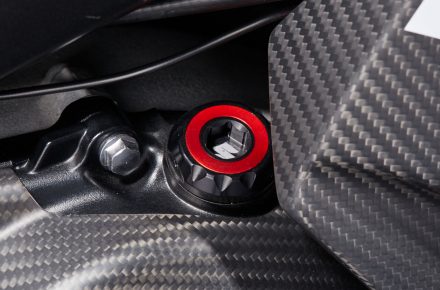
Aluminium Oil Fill Cap (Multiple Coloured Inserts)
This replacement for the OE part gives your bike a unique look. Made of aluminium with three different coloured inserts. Choose from red, gold or ...
-
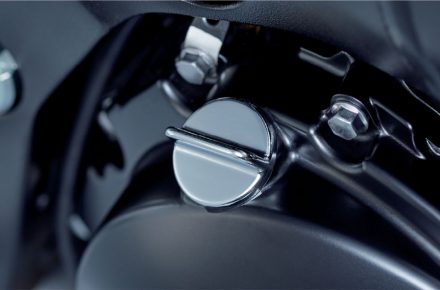
Chrome Oil Filler Cap
Add a custom look to your Suzuki with the chrome oil filler cap. Utilises existing stock o-ring. Fitment: Hayabusa: 2008 > GSX-S1000: 2016 > GSX-S1000F: ...
-
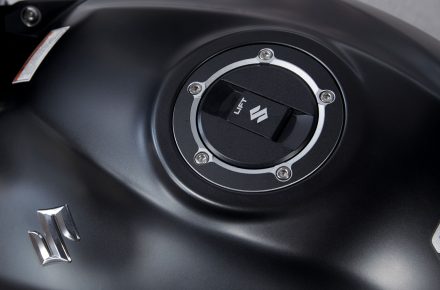
Fuel Cap Protection Decal – Black
Fuel cap protection sticker in piano black and made of Evotec. Note: Can not be used in conjunction with ring fixation for tank bag p/n ...
-
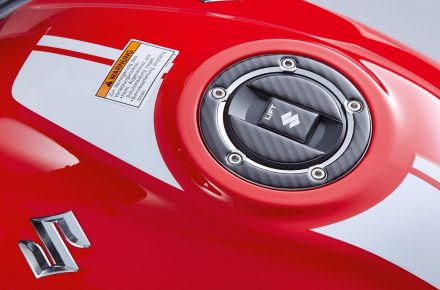
Fuel Cap Protection Decal – Carbon
Fuel cap protection sticker in carbon look and made of Evotec. Note: Can not be used in conjunction with ring fixation for tank bag P/N ...
-
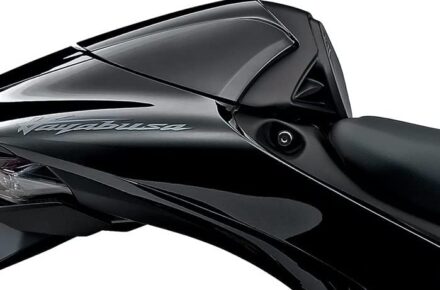
Hayabusa Single Seat Cowl (KGL)
Streamlined design perfectly matches the famous Hayabusa silhouette for a clean solo-rider appearance. FITMENT: Gen III Hayabusa COLOUR: GL.SPARKLE BLACK/MET.MAT BLACK NO.2
-
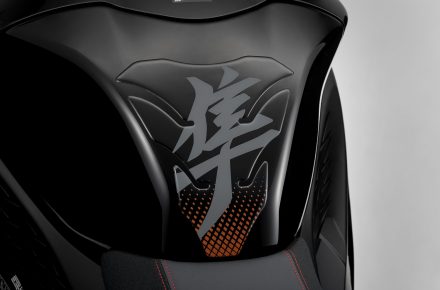
Hayabusa Tank Pad (Gold)
Protects against tank scratches, features the famous Hayabusa logo in Japanese Kanji. FITMENT: Hayabusa GEN III
-
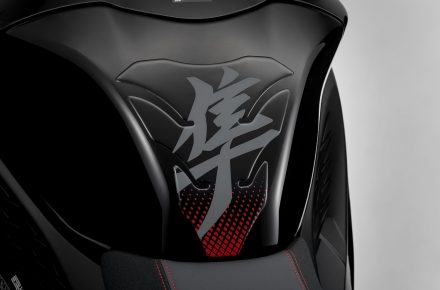
Hayabusa Tank Pad (Red)
Protects against tank scratches, features the famous Hayabusa logo in Japanese Kanji. FITMENT: Hayabusa GEN III
-
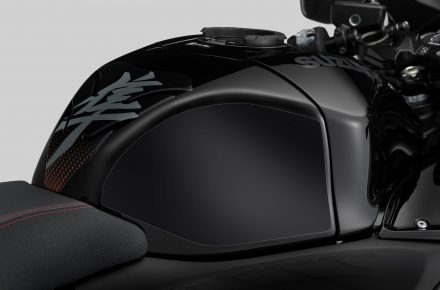
Hayabusa Tank Protection Decals
Transparent decal set pre-cut to the Hayabusa tank curves, helps protect against scratches. FITMENT: Hayabusa GEN III
-
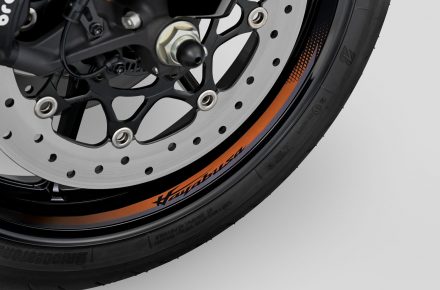
Hayabusa Wheel Decal (Gold)
Gold coloured rim decal with Hayabusa logo. NOTE: x1 set completes one wheel only, x2 sets required for complete bike. FITMENT: Hayabusa GEN III
-

Hayabusa Wheel Decal (Gold) PAIR
Gold coloured rim decal with Hayabusa logo. NOTE: Pair includes x2 sets to complete entire bike. FITMENT: Hayabusa GEN III
-
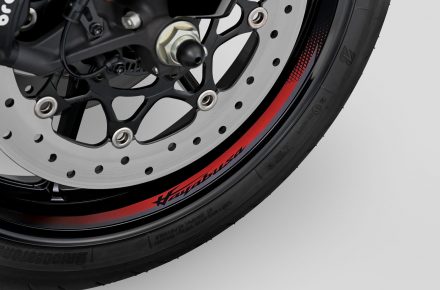
Hayabusa Wheel Decal (Red)
Red coloured rim decal with Hayabusa logo. NOTE: x1 set completes one wheel only, x2 sets required for complete bike. FITMENT: Hayabusa GEN III
-

Hayabusa Wheel Decal (Red) PAIR
Red coloured rim decal with Hayabusa logo. NOTE: Pair includes x2 sets to complete entire bike. FITMENT: Hayabusa GEN III
-
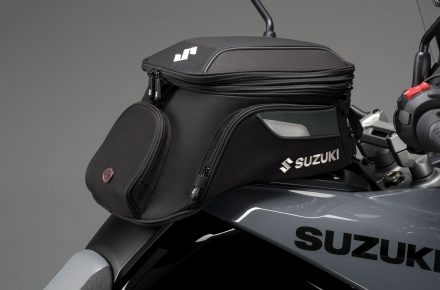
Tank Bag – Large
Durable nylon tank bag affixes to the fuel tank with a snap-on ring. Bag removes with a simple pull of the release cord. Large bag ...
-
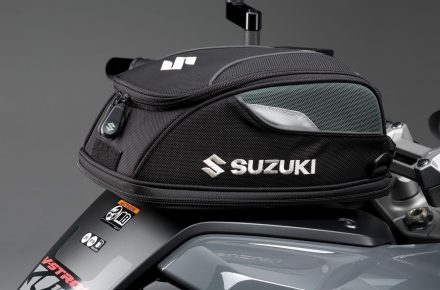
Tank Bag – Small
Durable nylon tank bag affixes to the fuel tank with a snap-on ring. Bag removes with a simple pull of the release cord. It includes ...
BikeMe’s Boris Mihailovic reflects upon his time spent with the new Gen III Hayabusa.
“The most honest and worthwhile review of the 2022 Gen 3 Hayabusa in the world”
Hayabusa
Enter the 3rd Generation of Ultimate Sport
Suzuki Care
-
Suzuki Finance
A finance experience for your Suzuki lifestyle. Flexible, hassle-free solutions tailored to your needs. On the road today, financial freedom tomorrow.
Find out more -
Roadside Assistance
No matter where you are, no matter when. Roadside assistance from the people who know you and know your Suzuki. Support for when you need it the most.
Find out more


